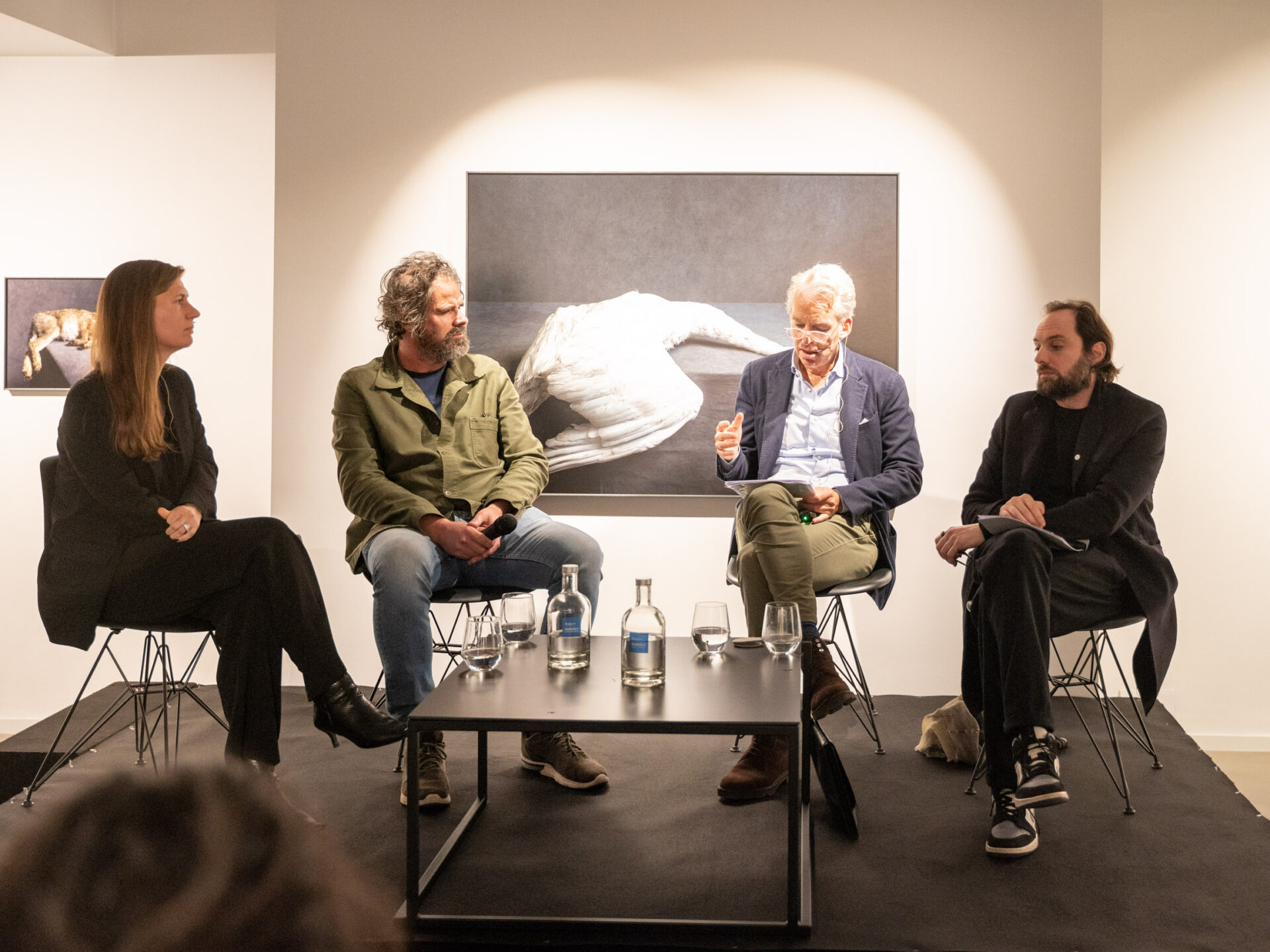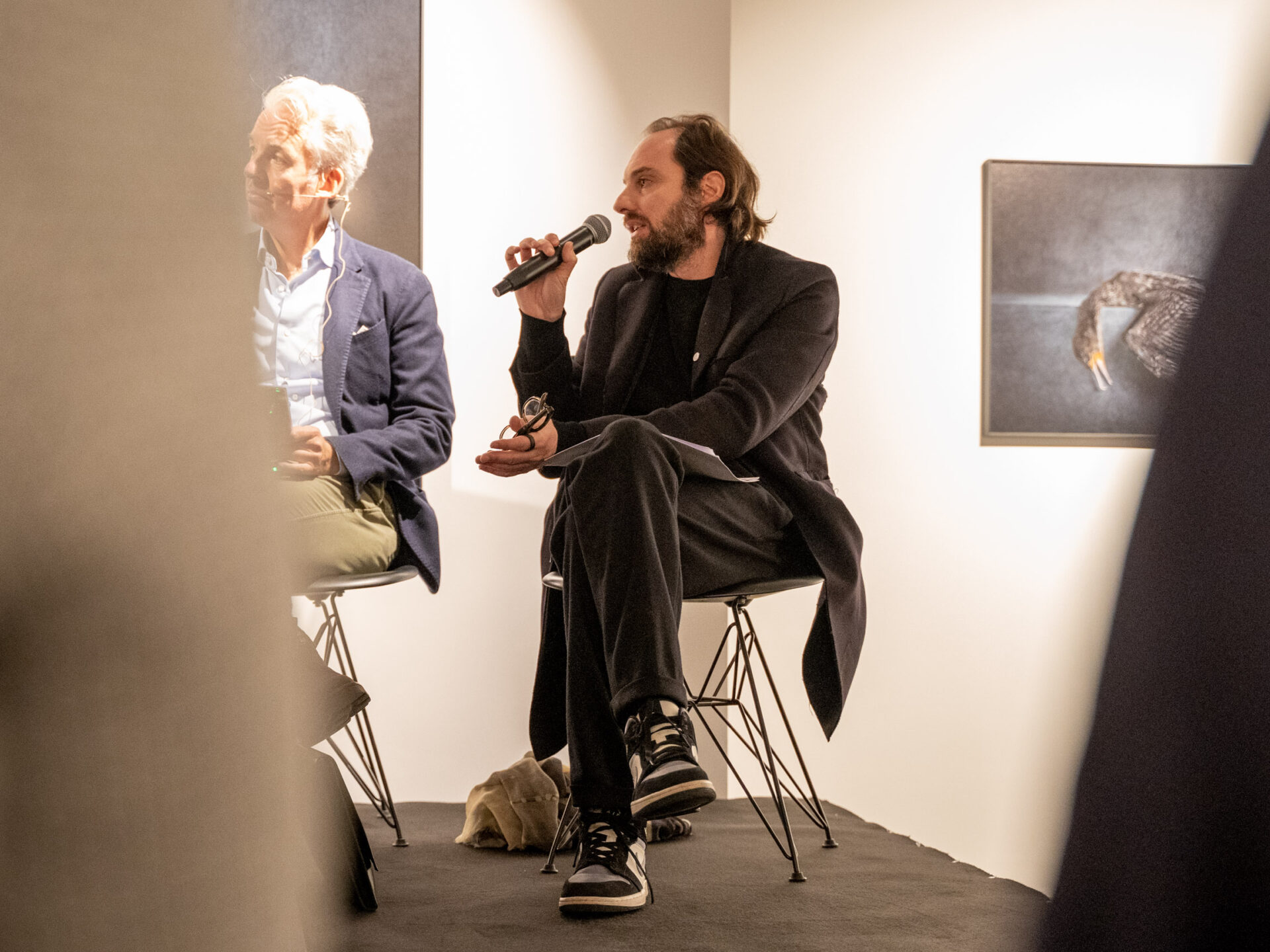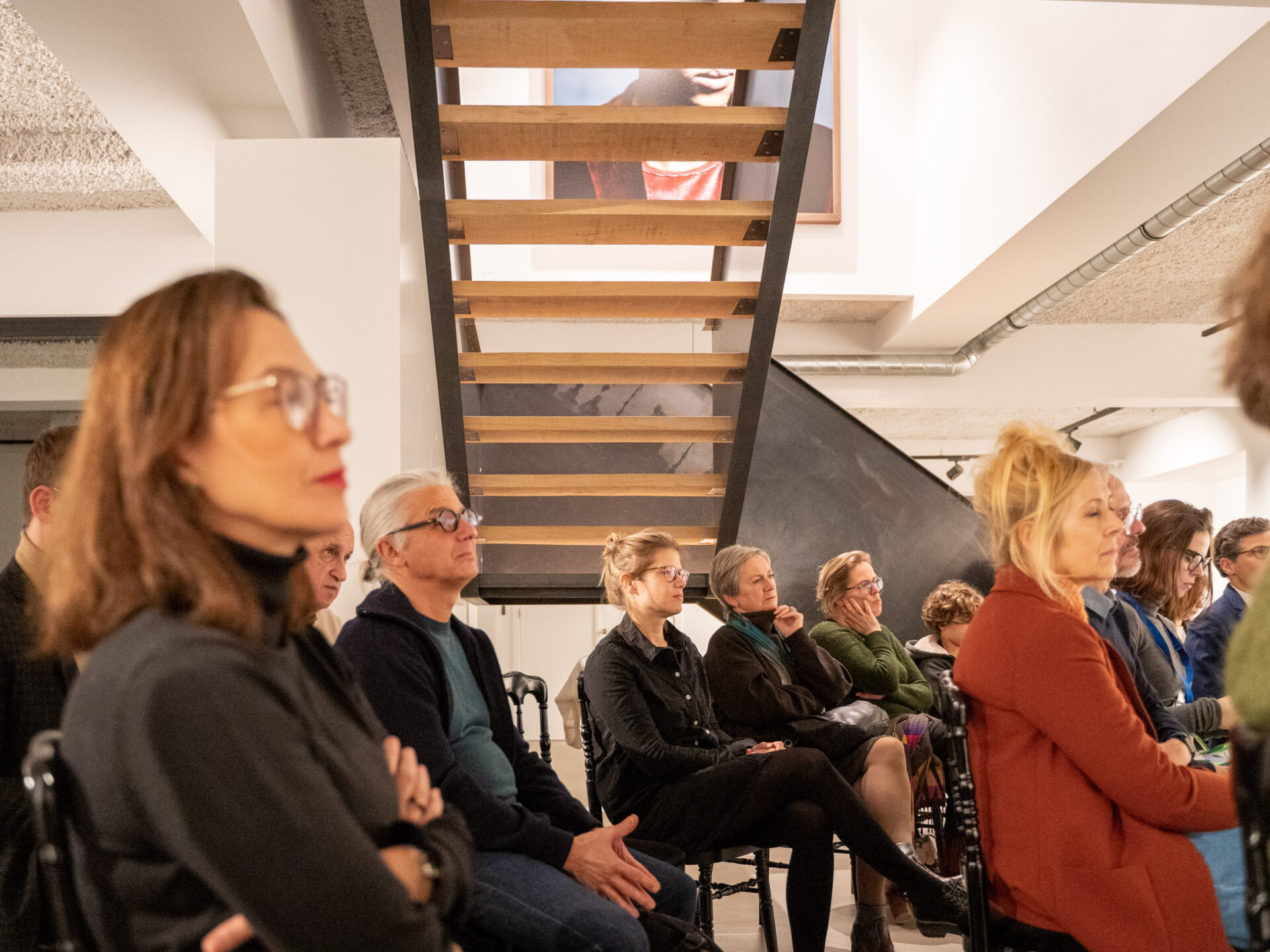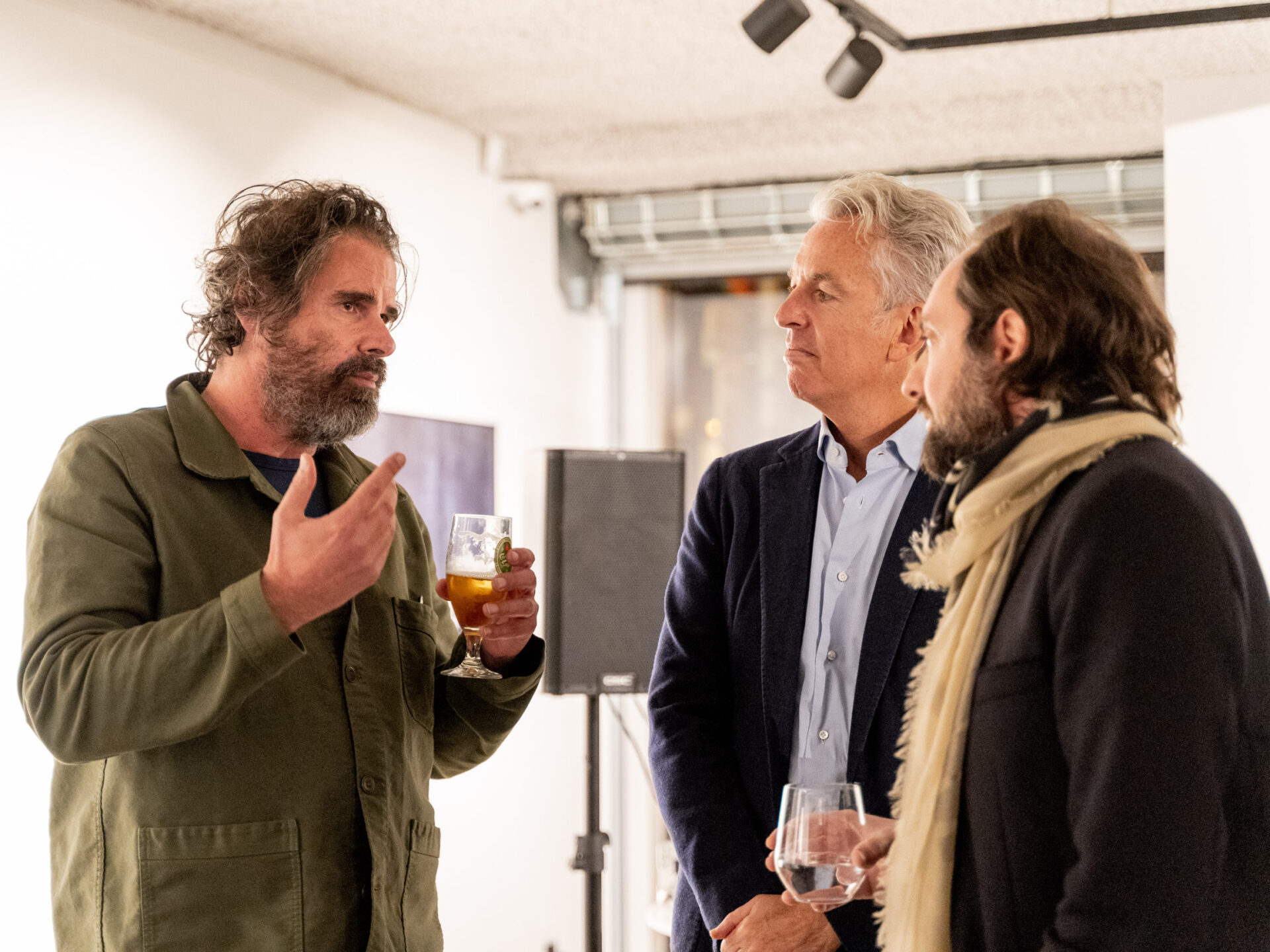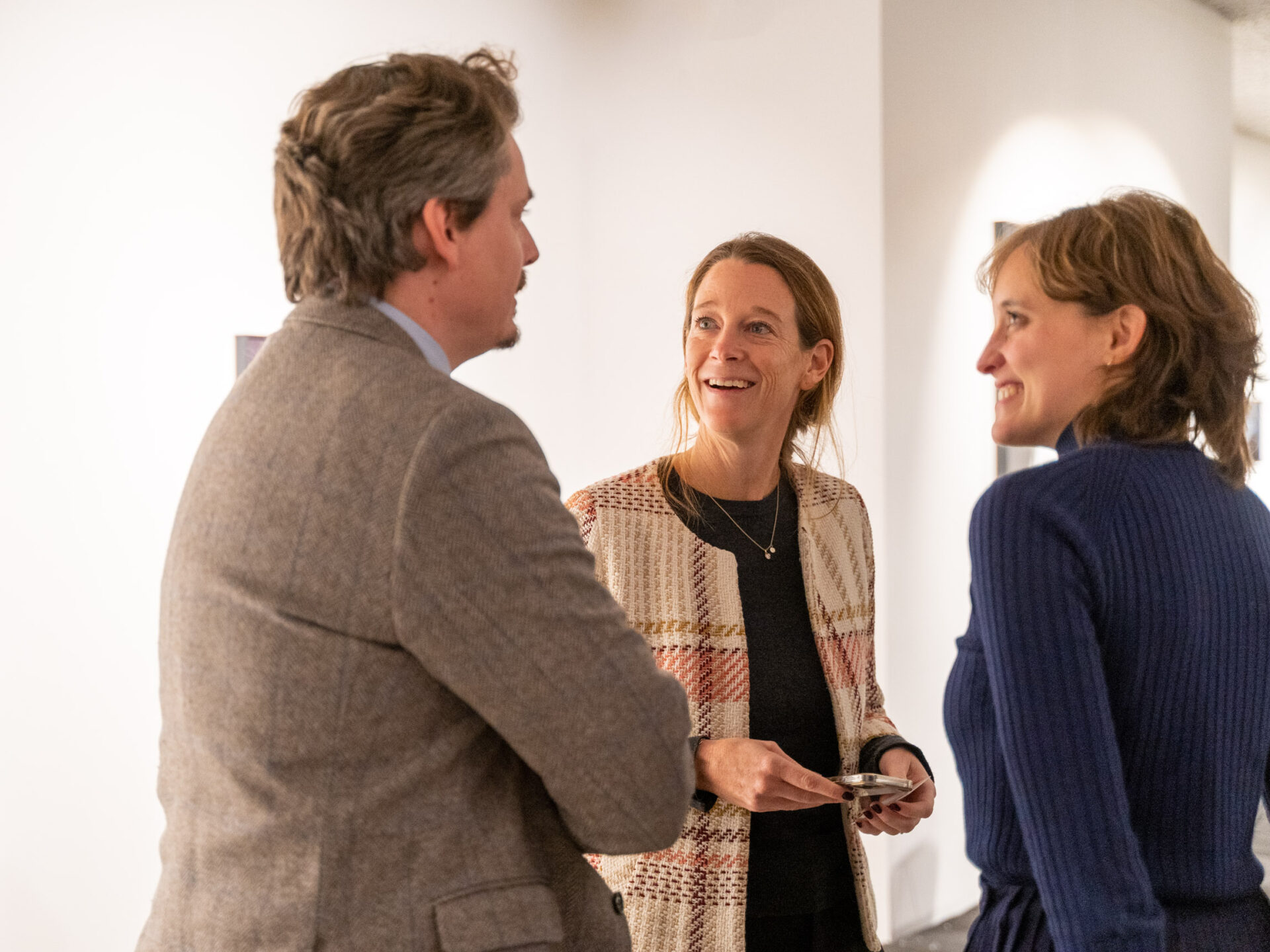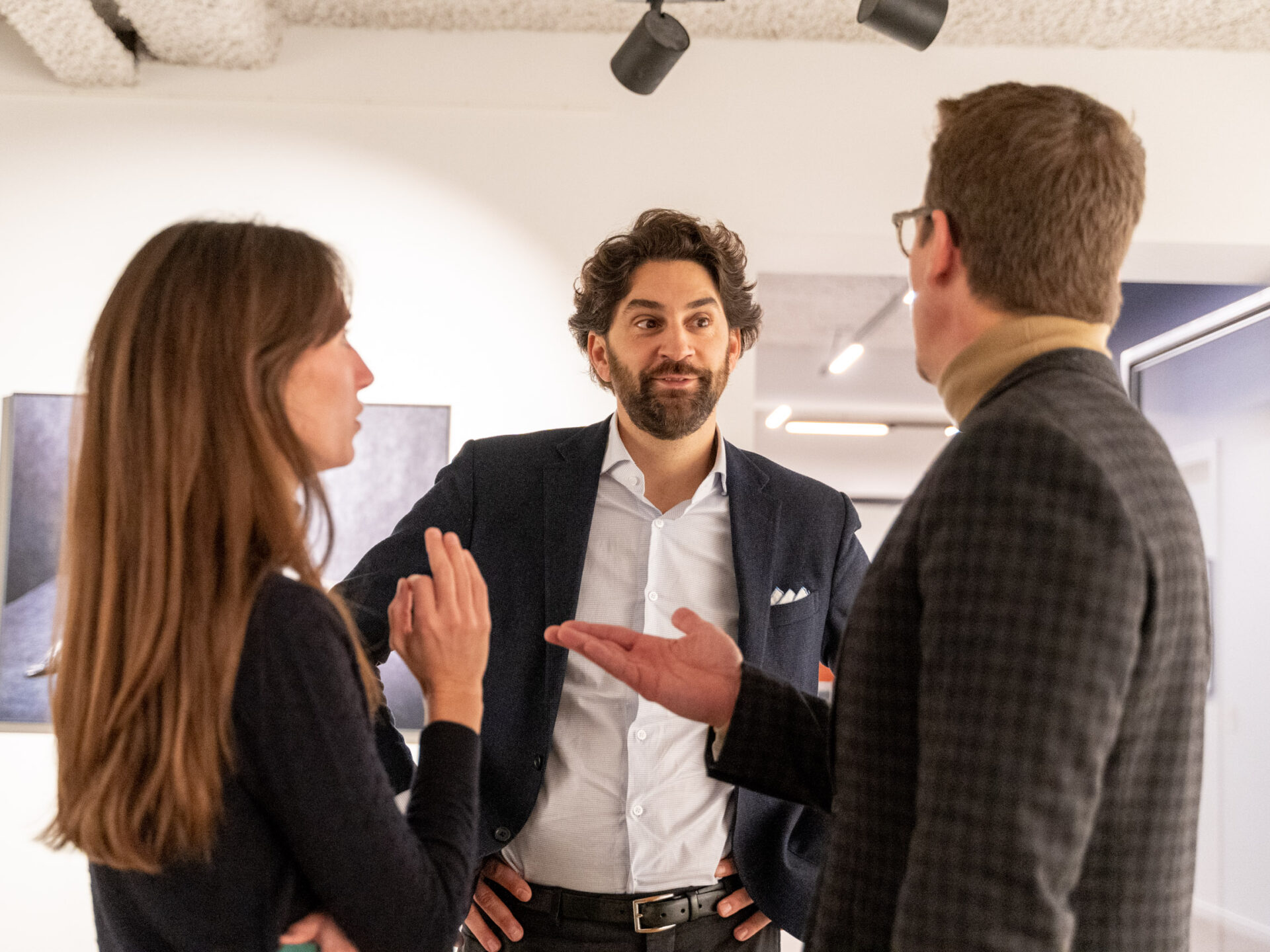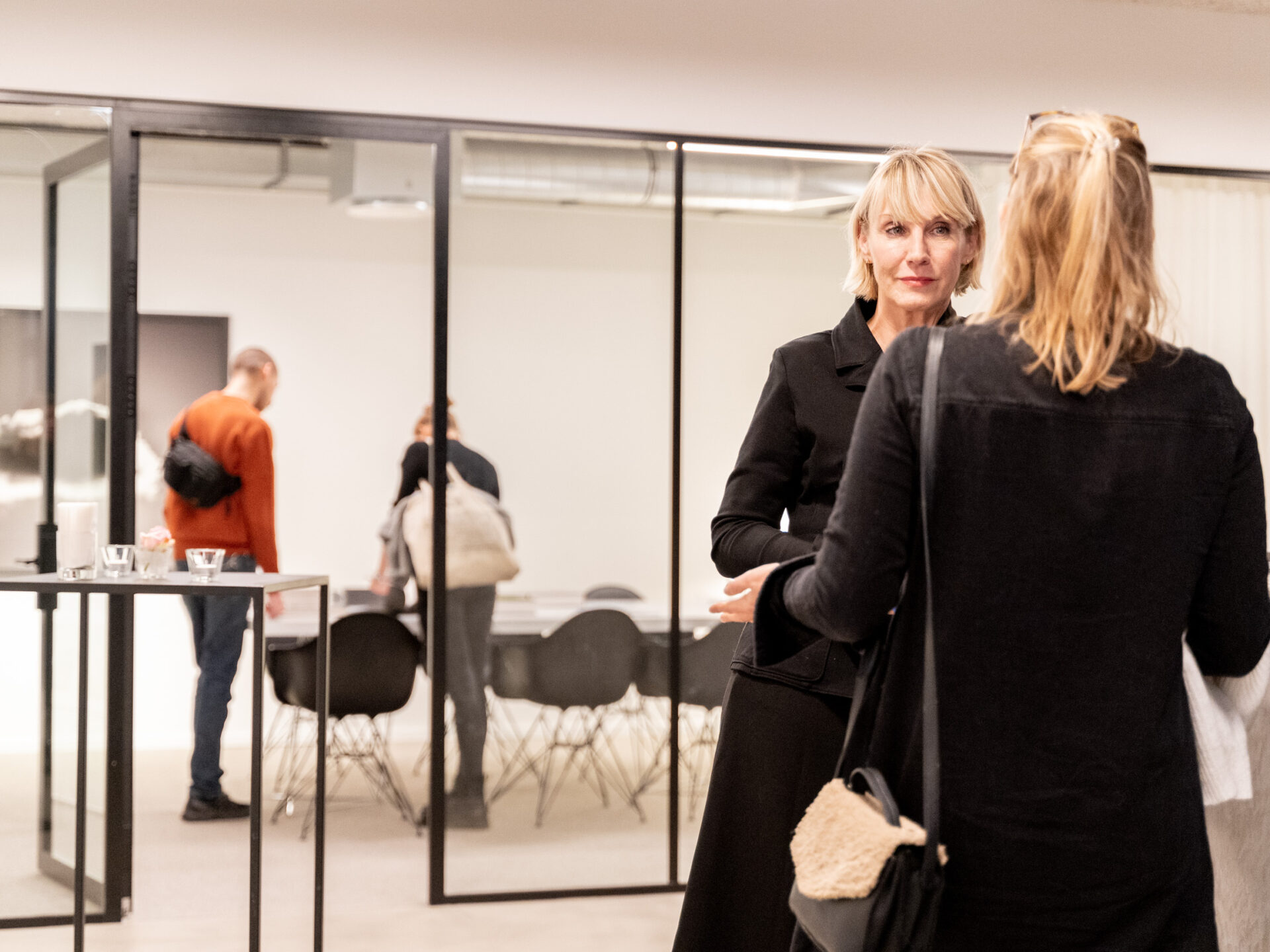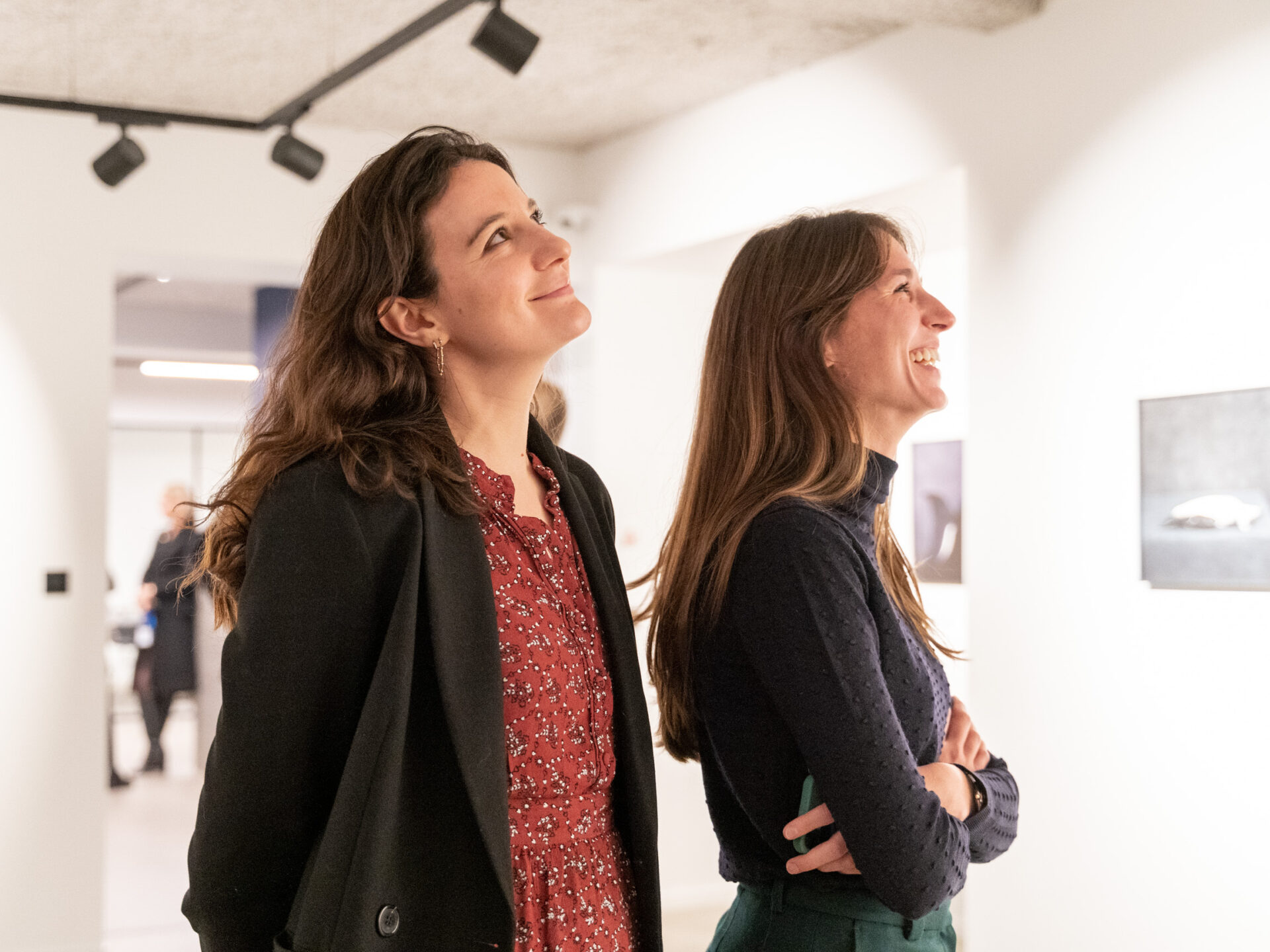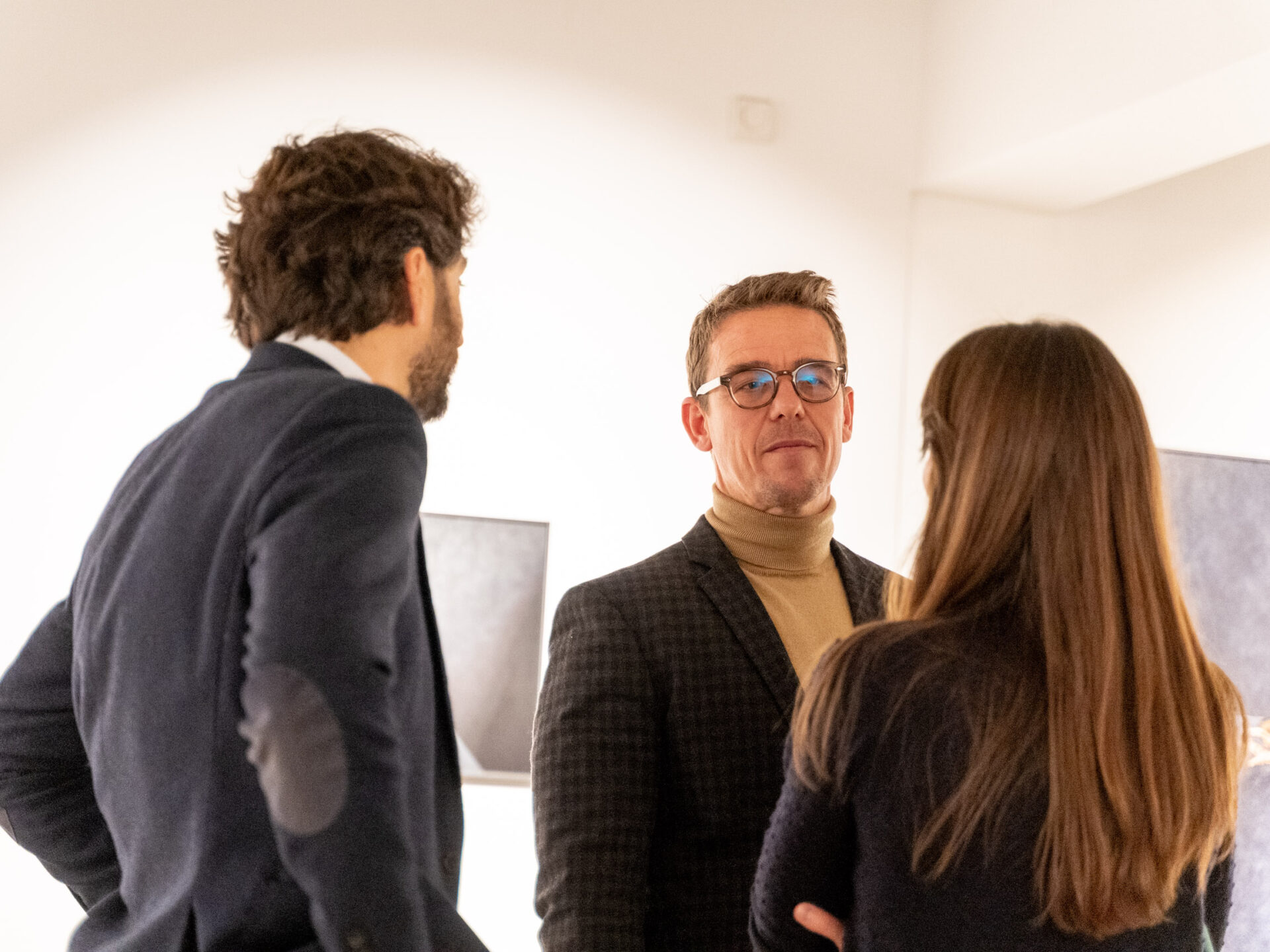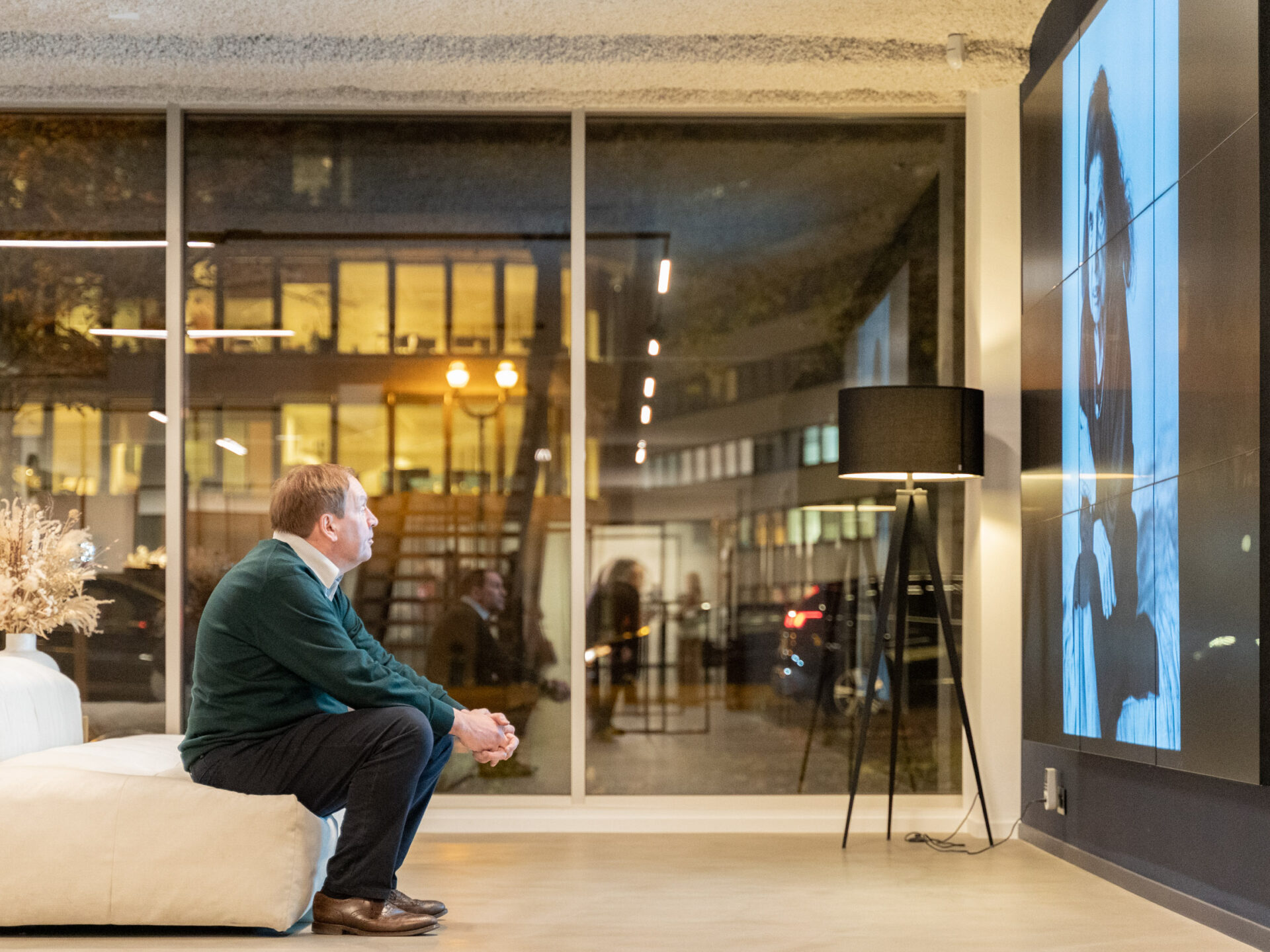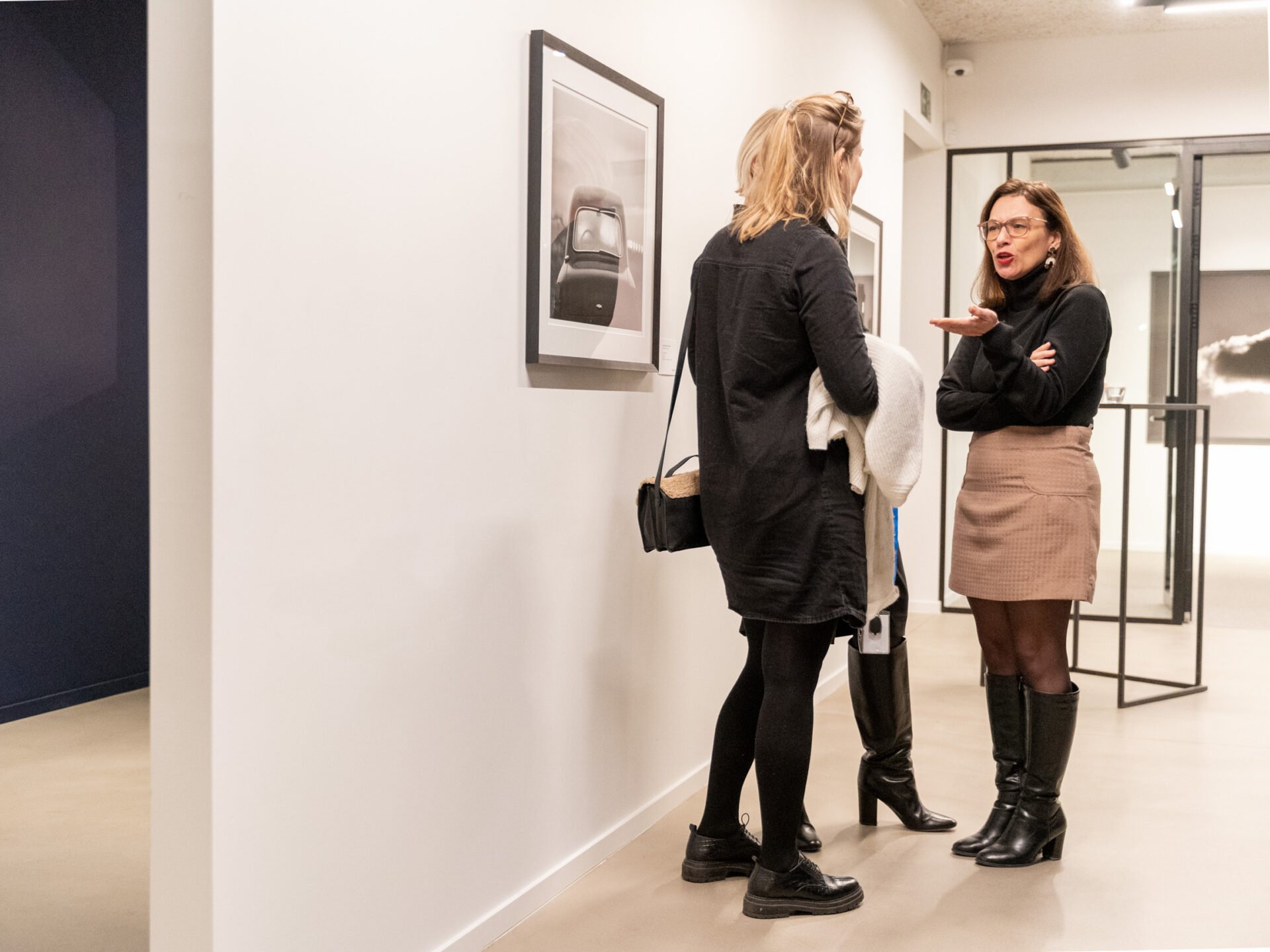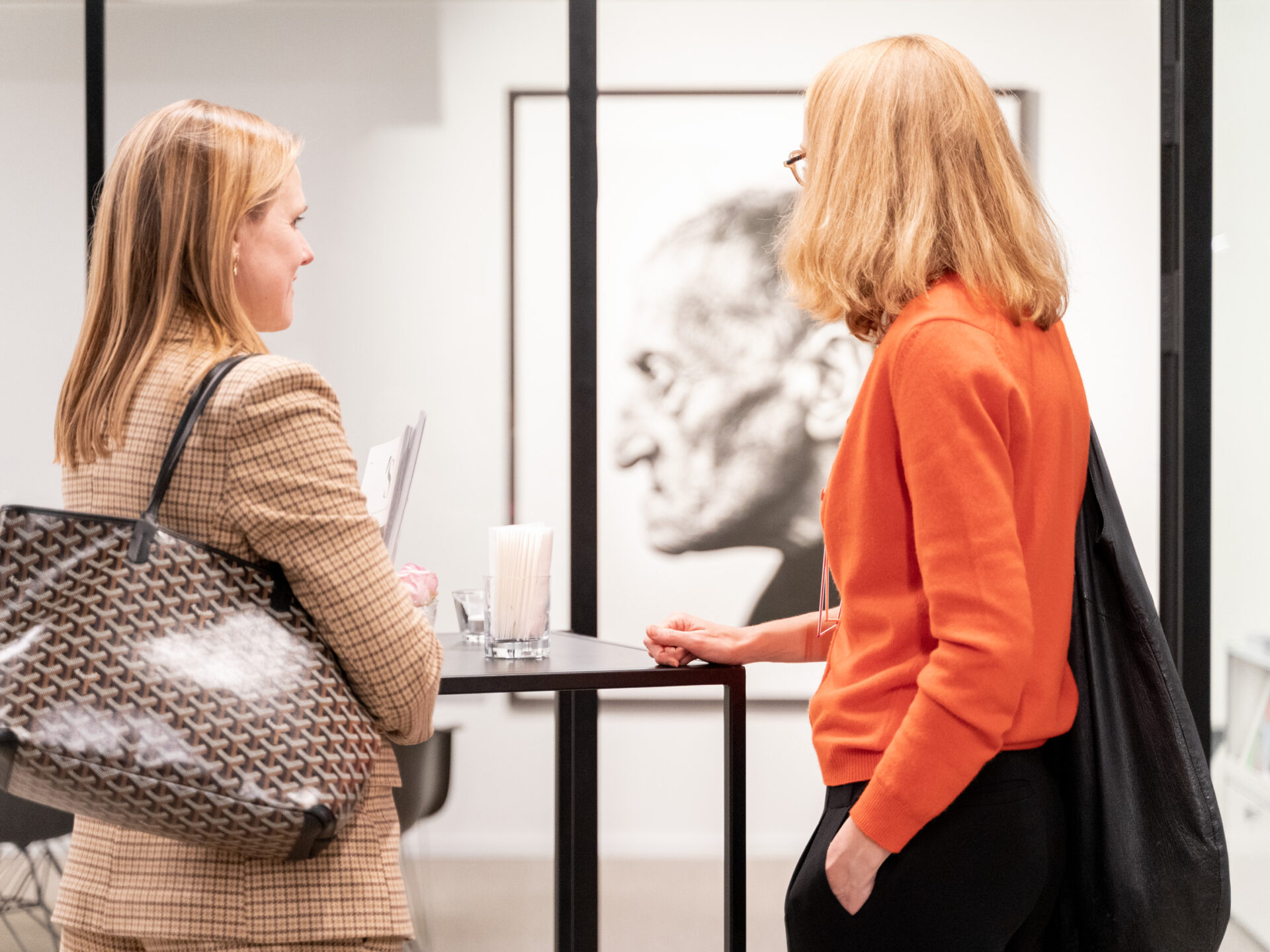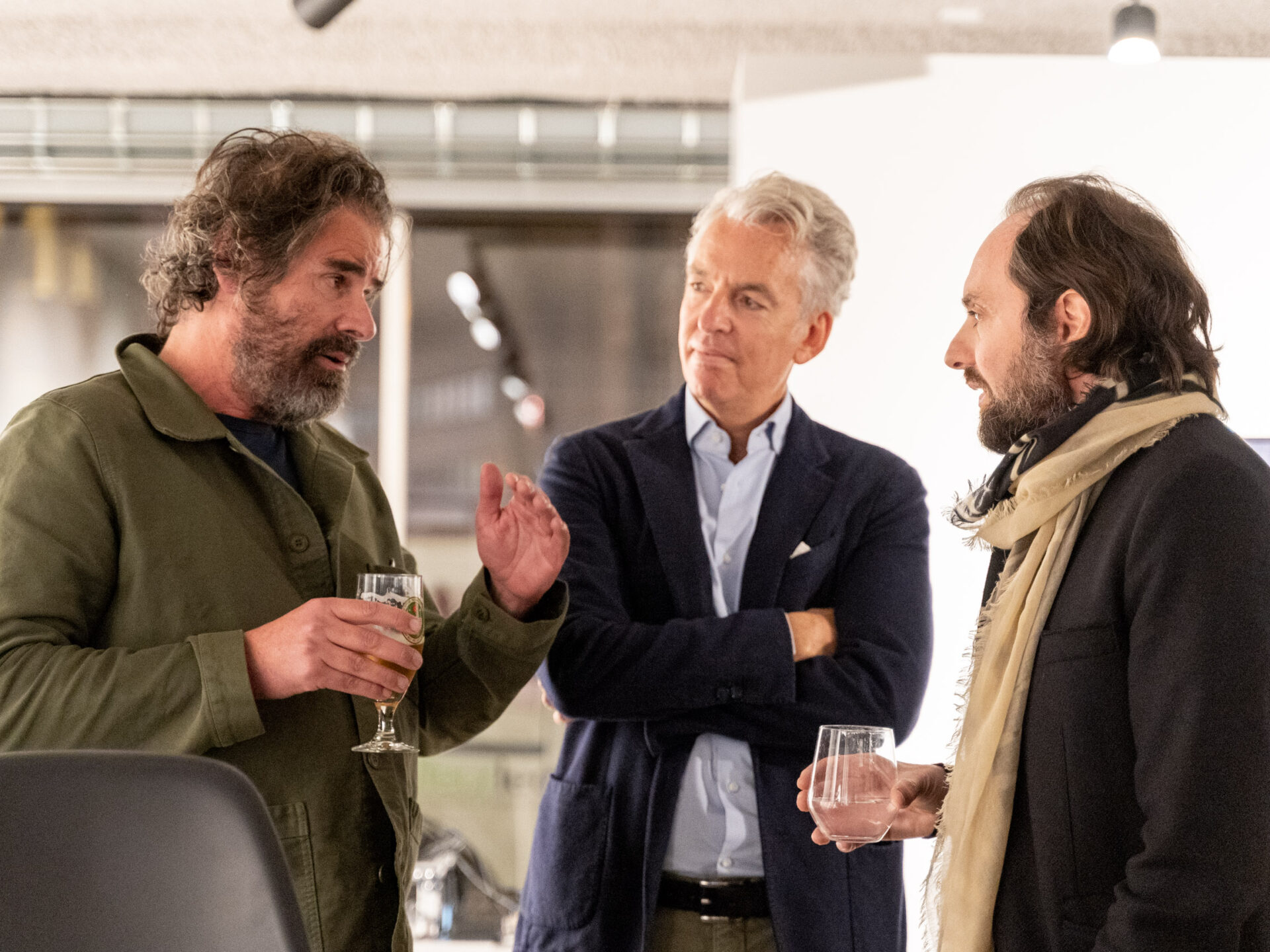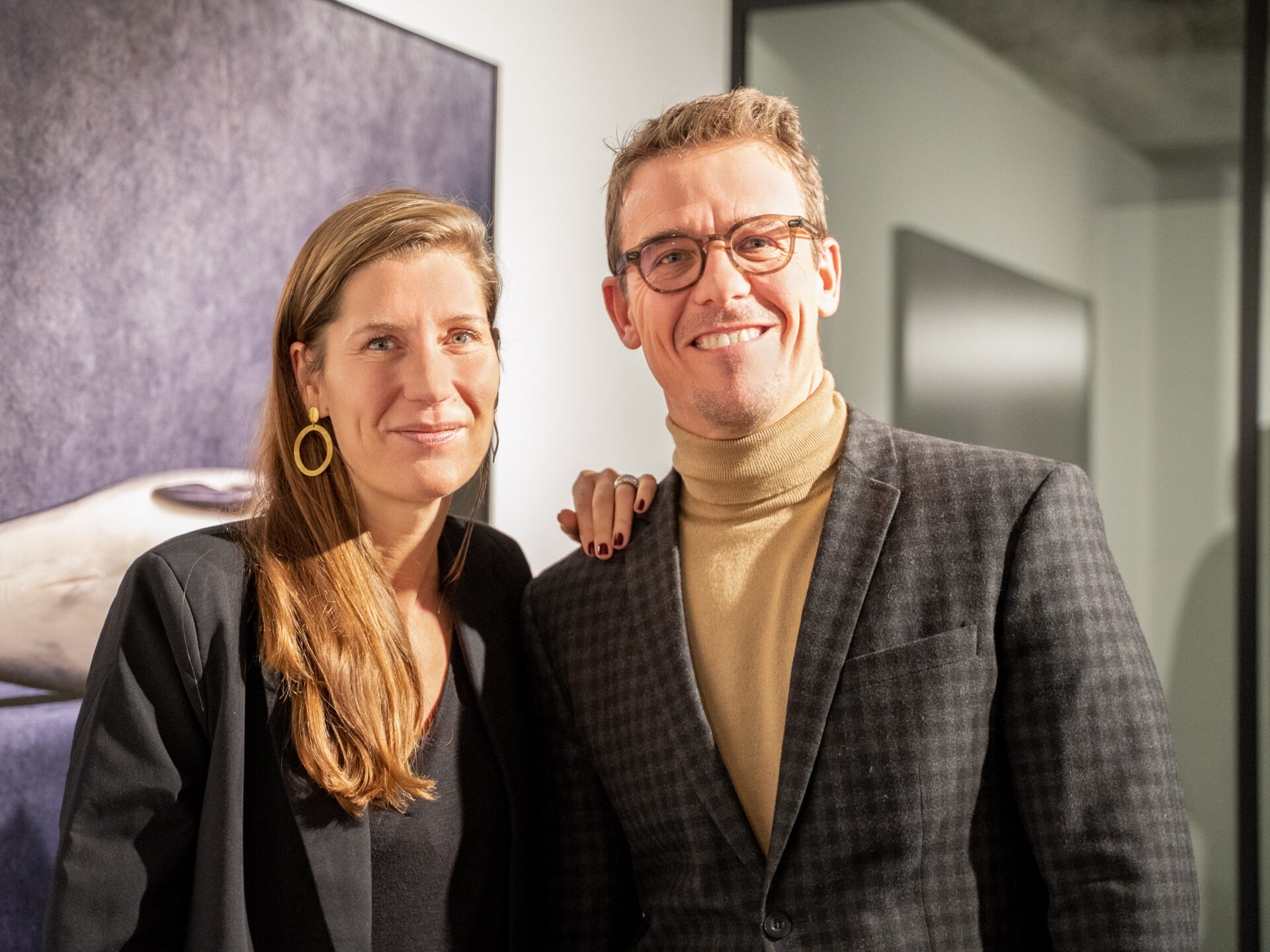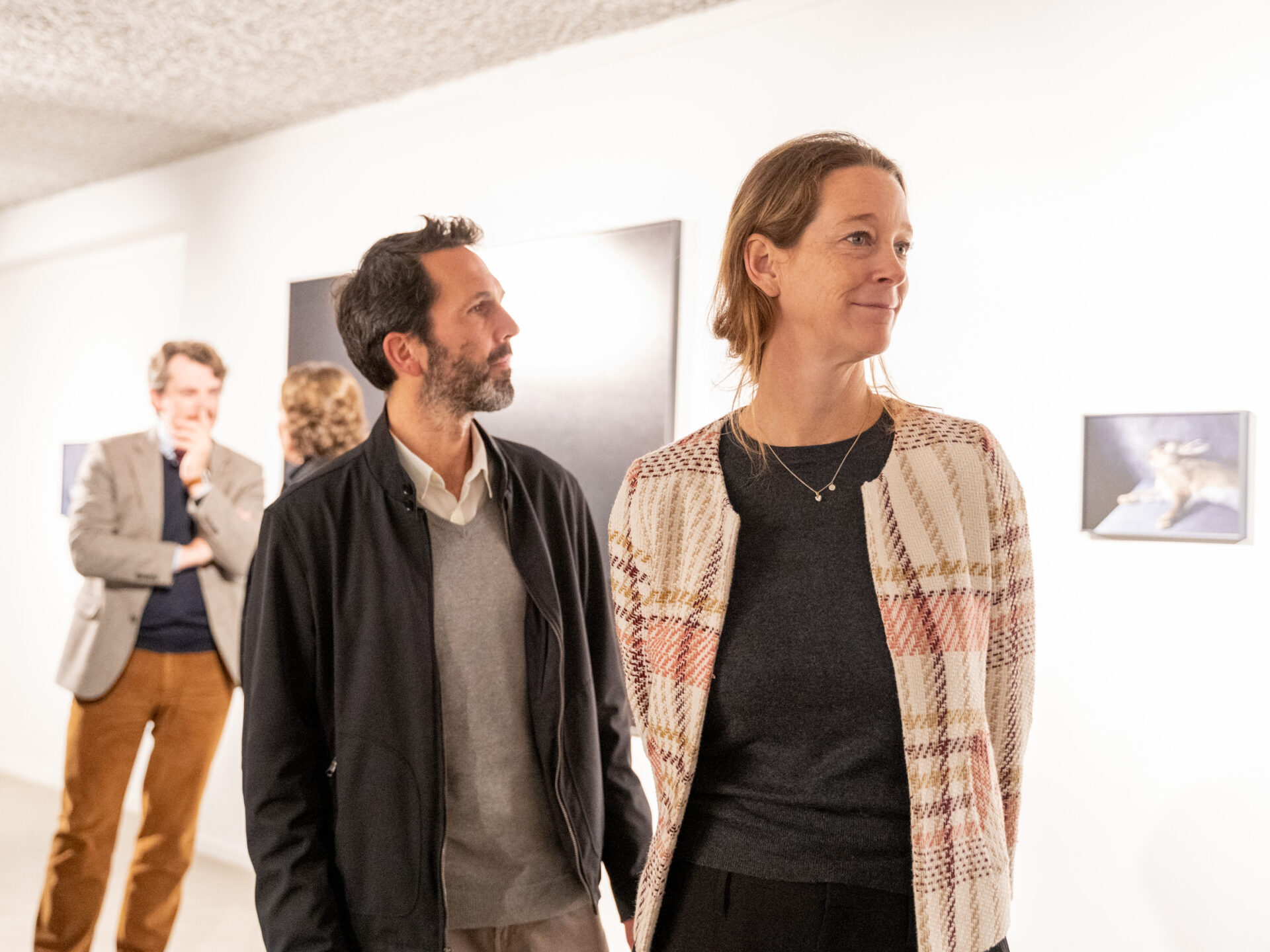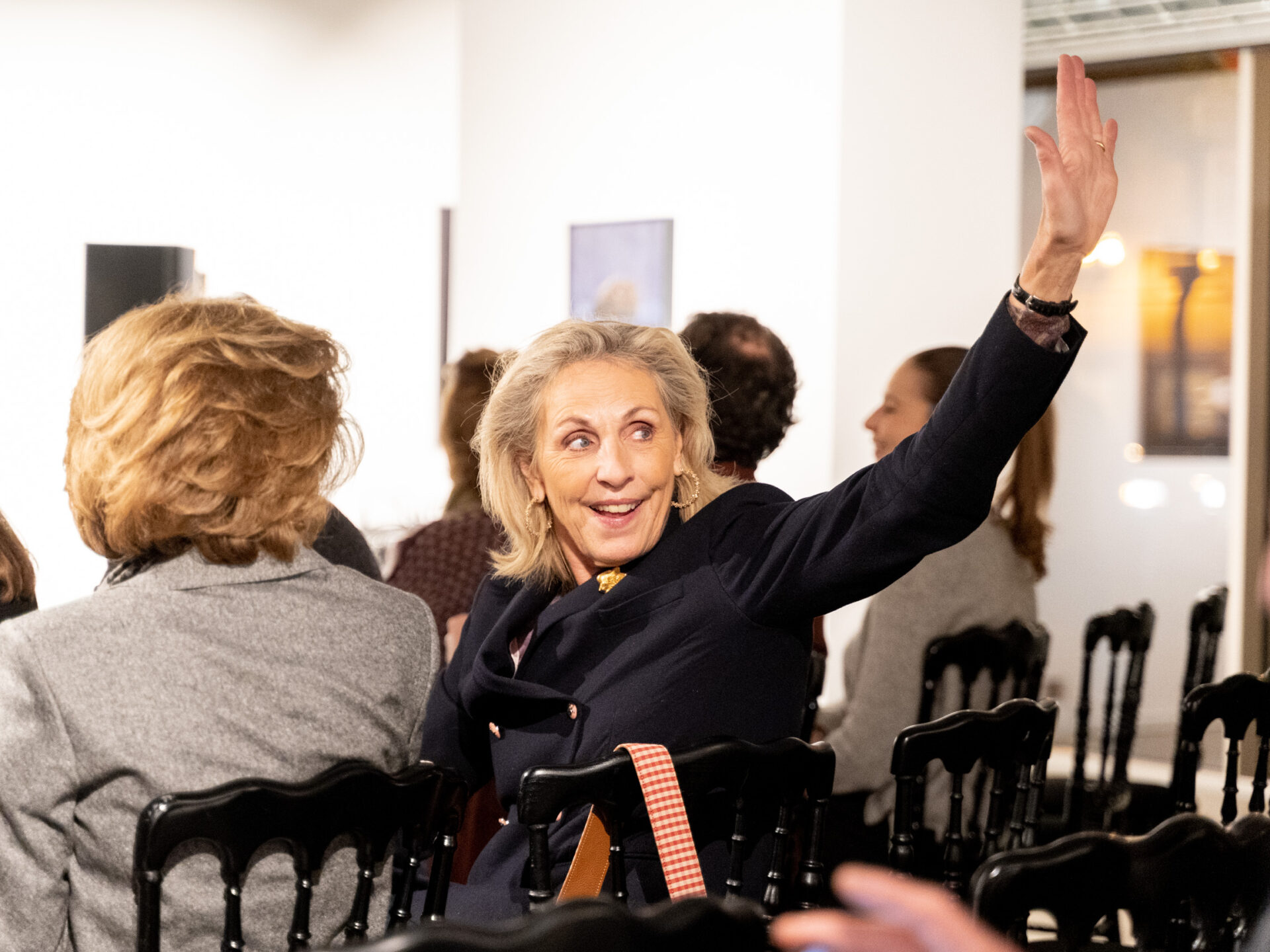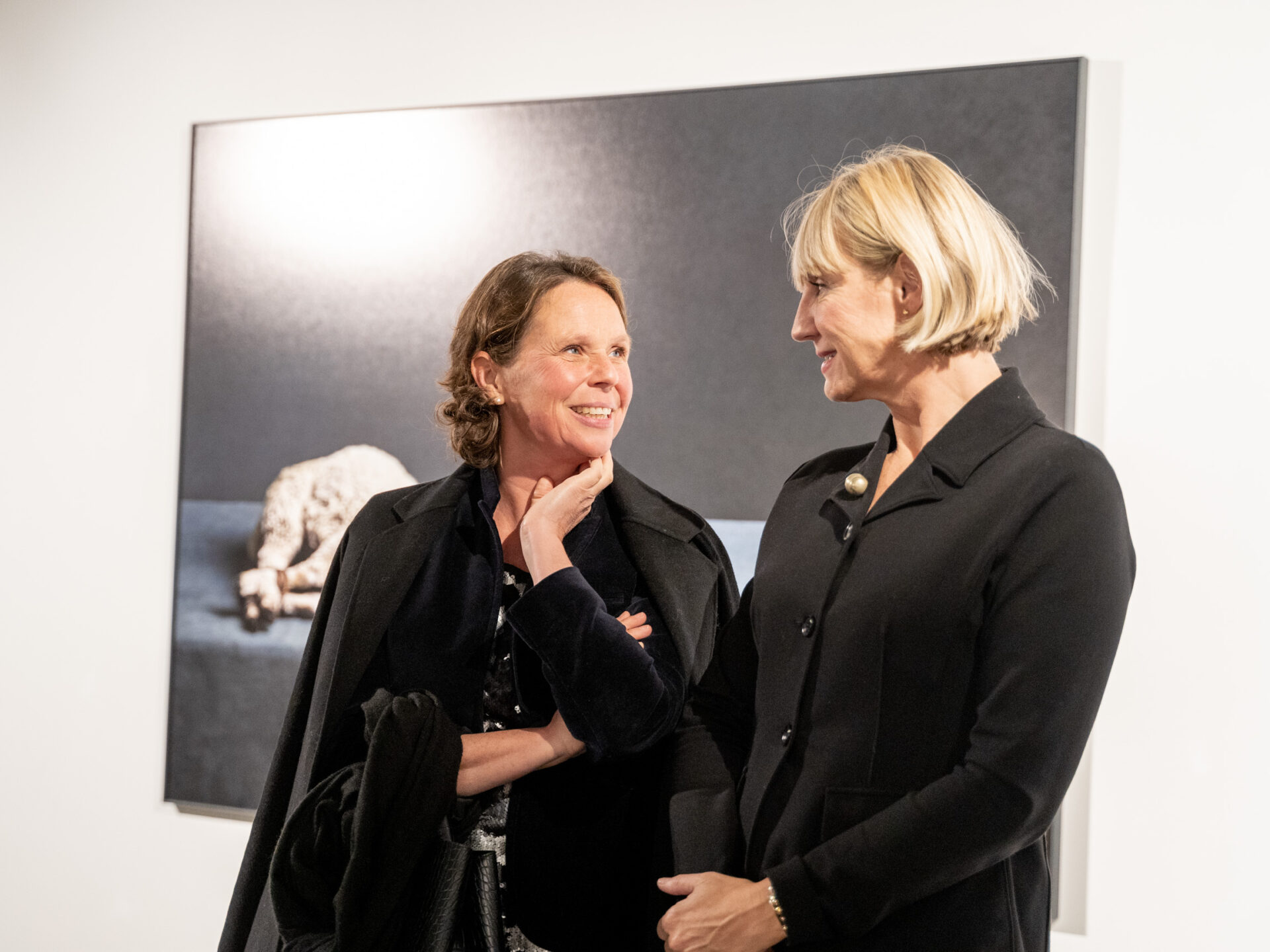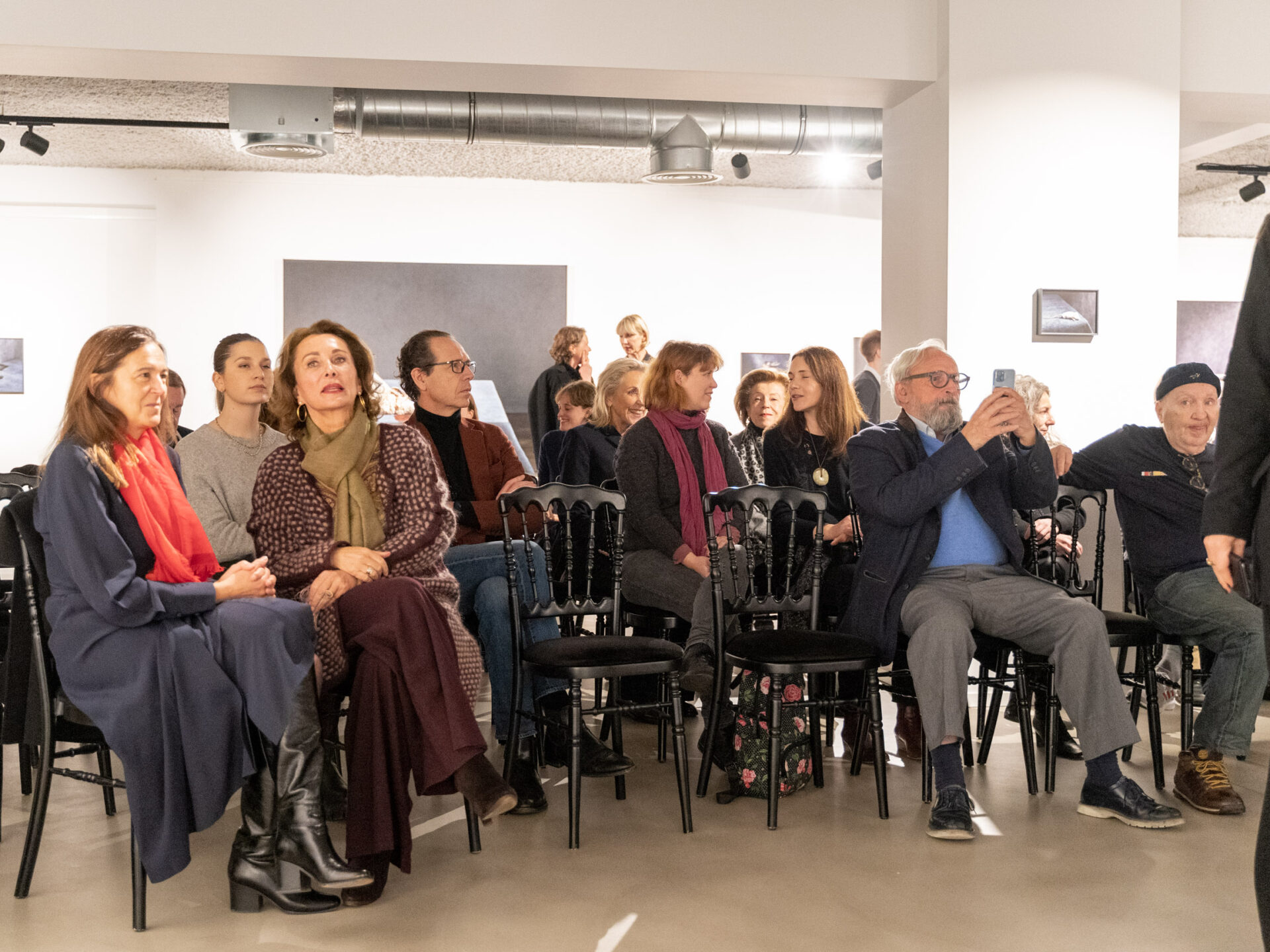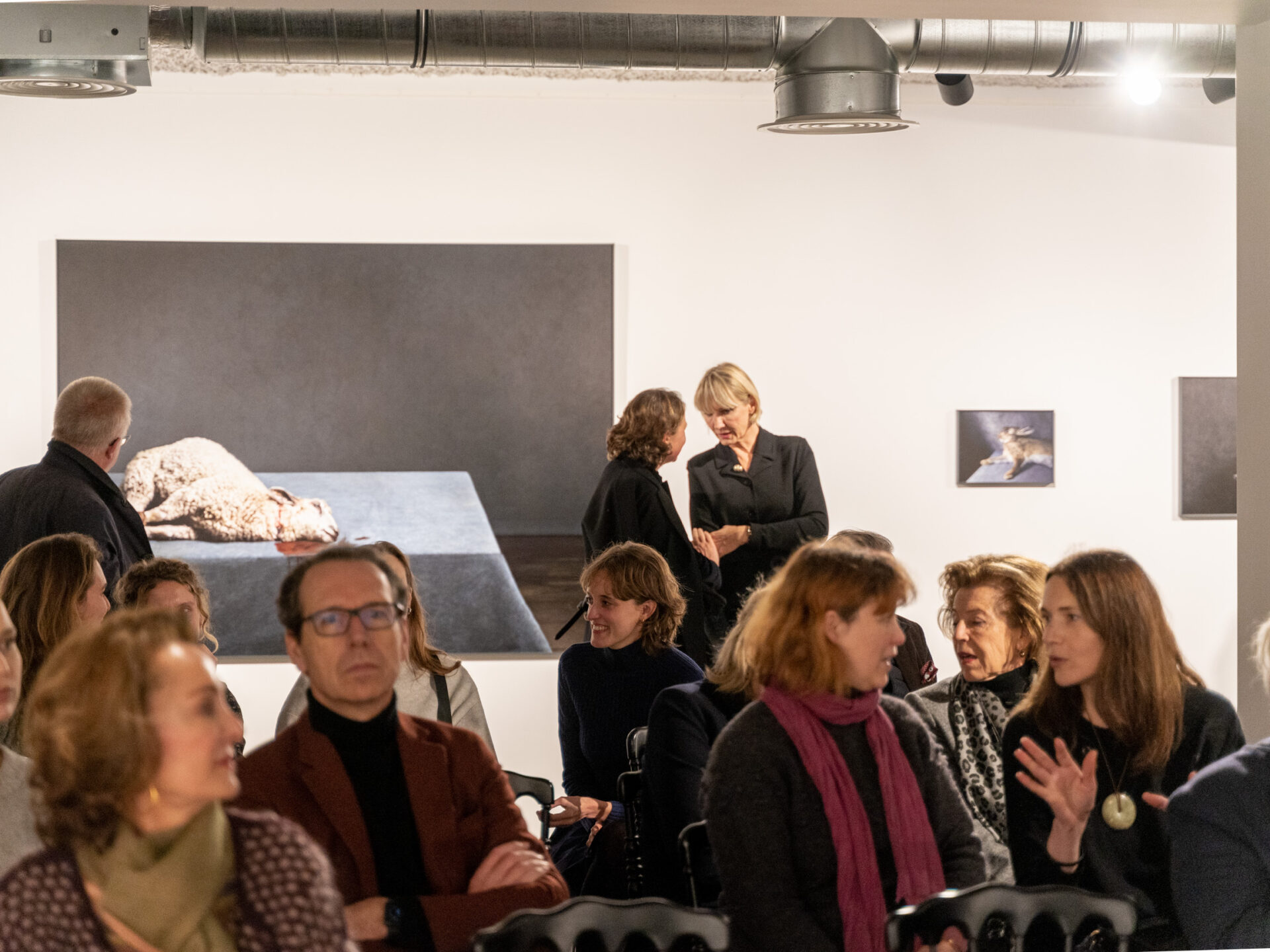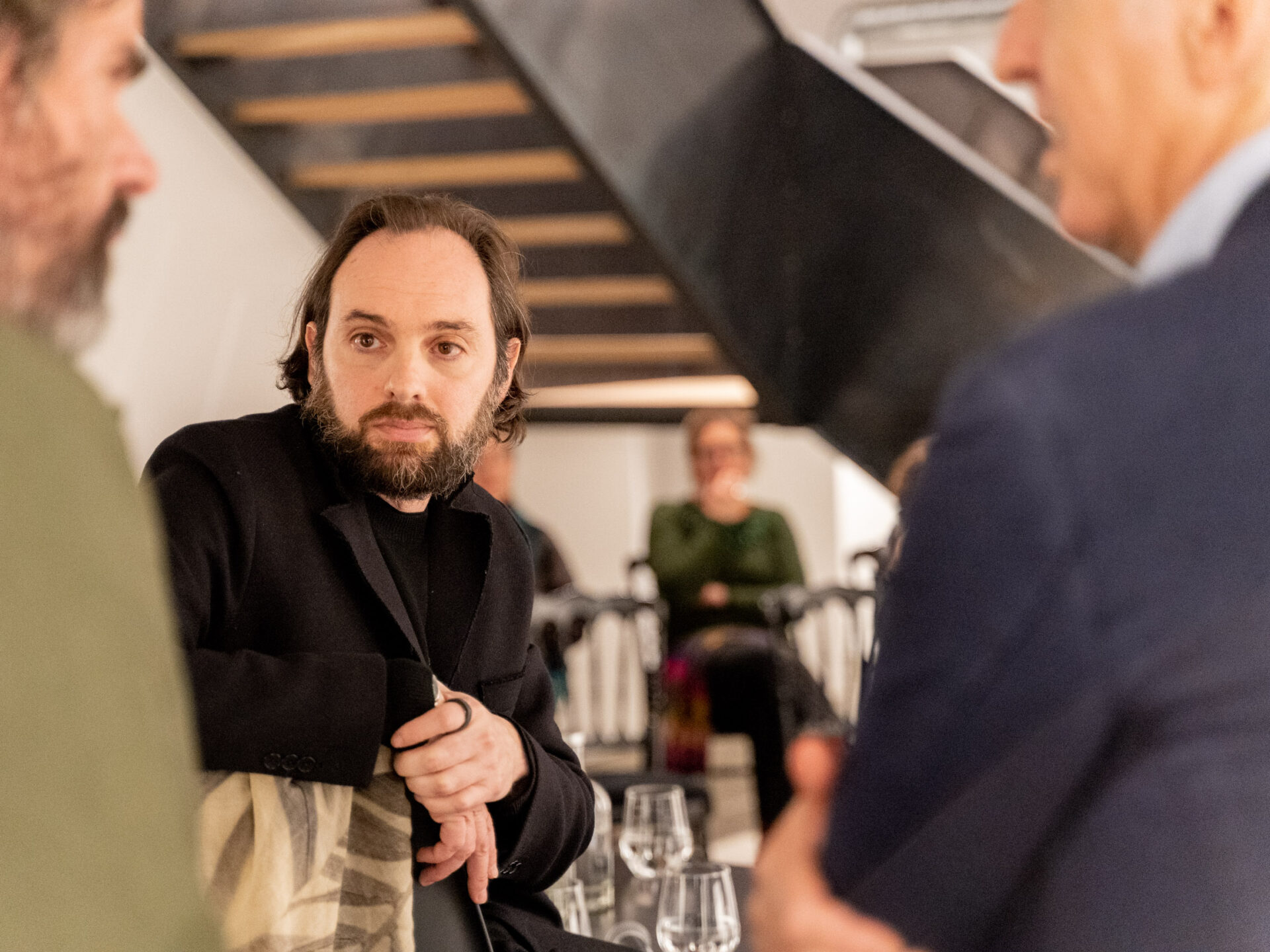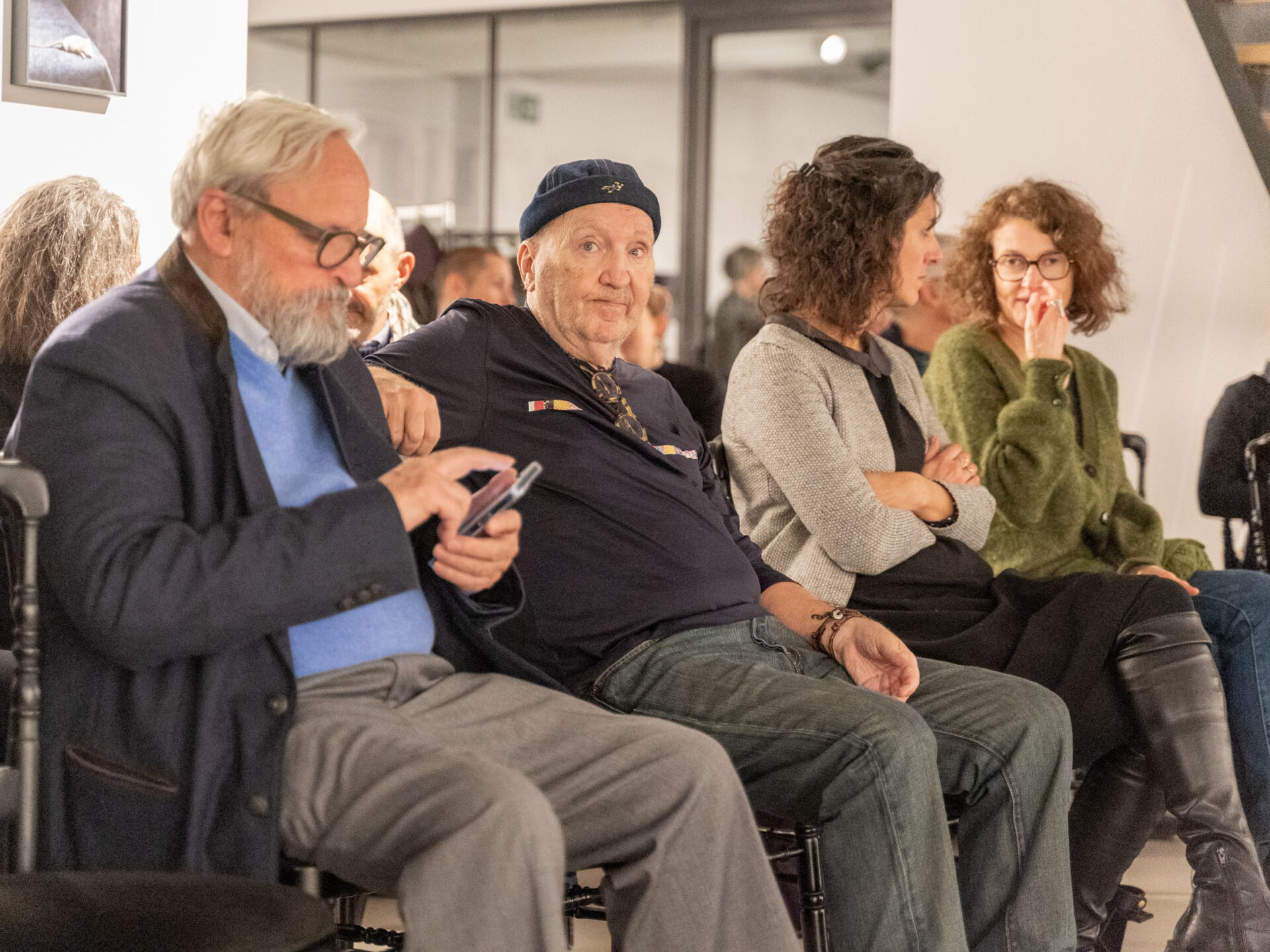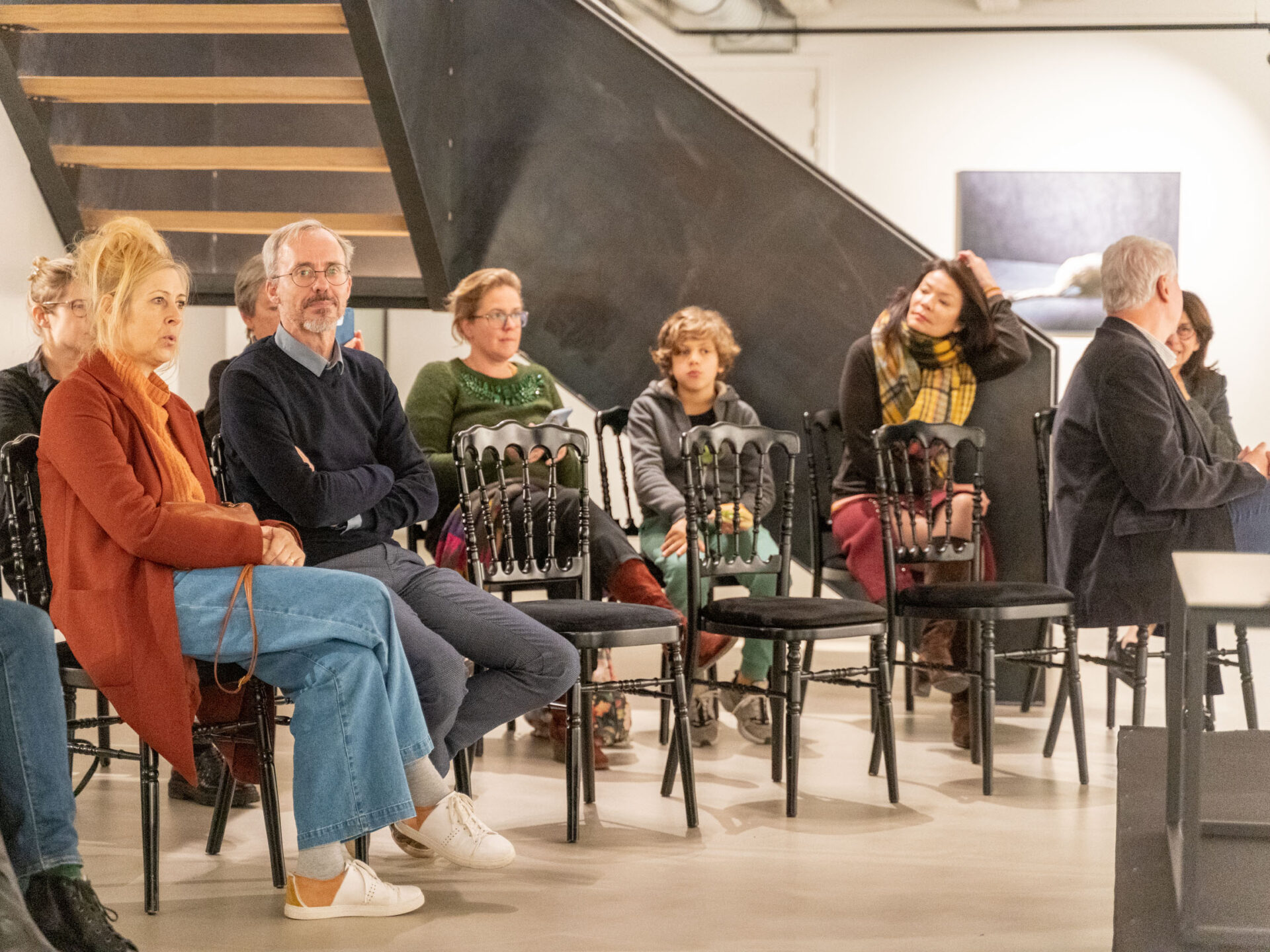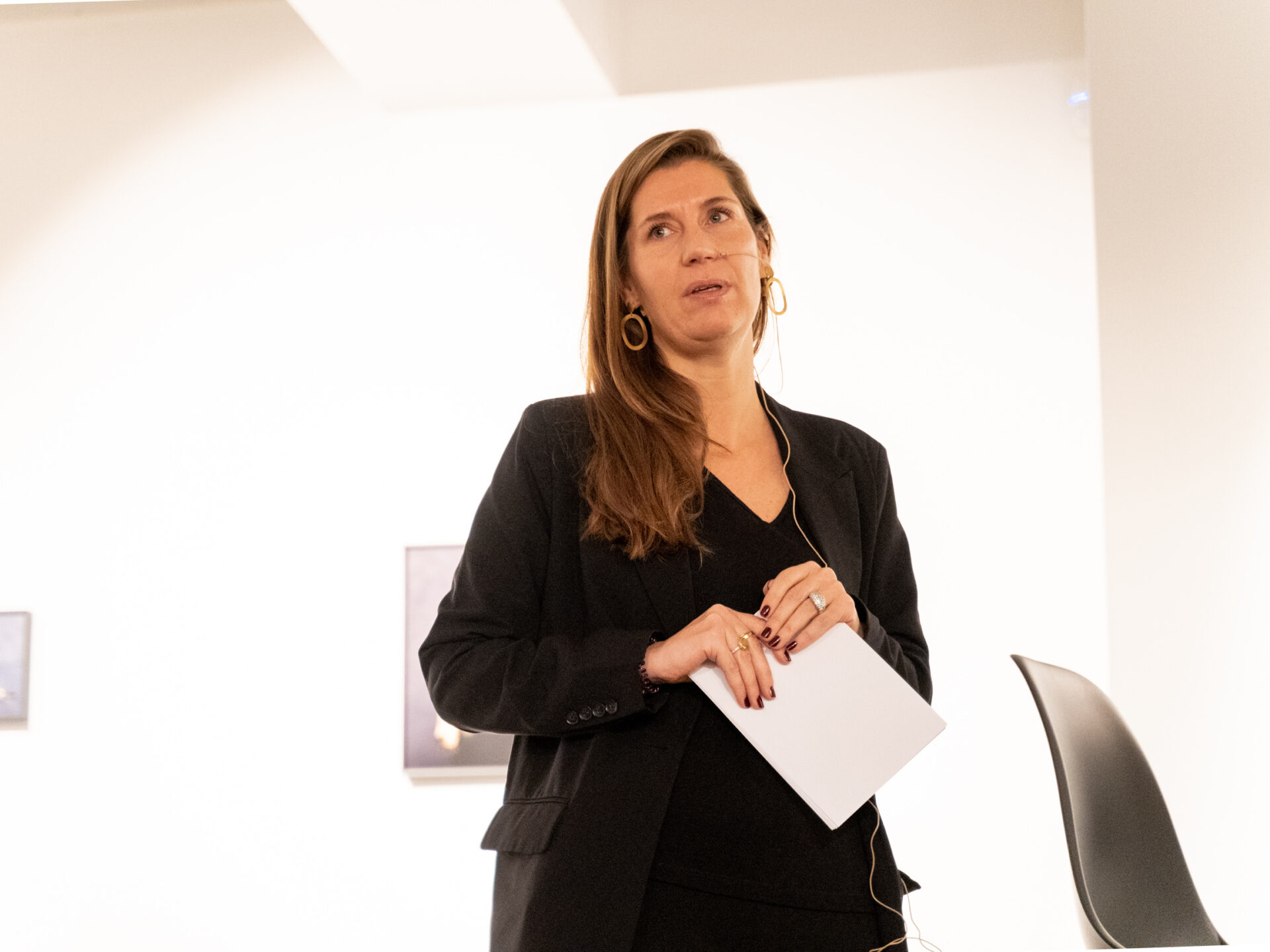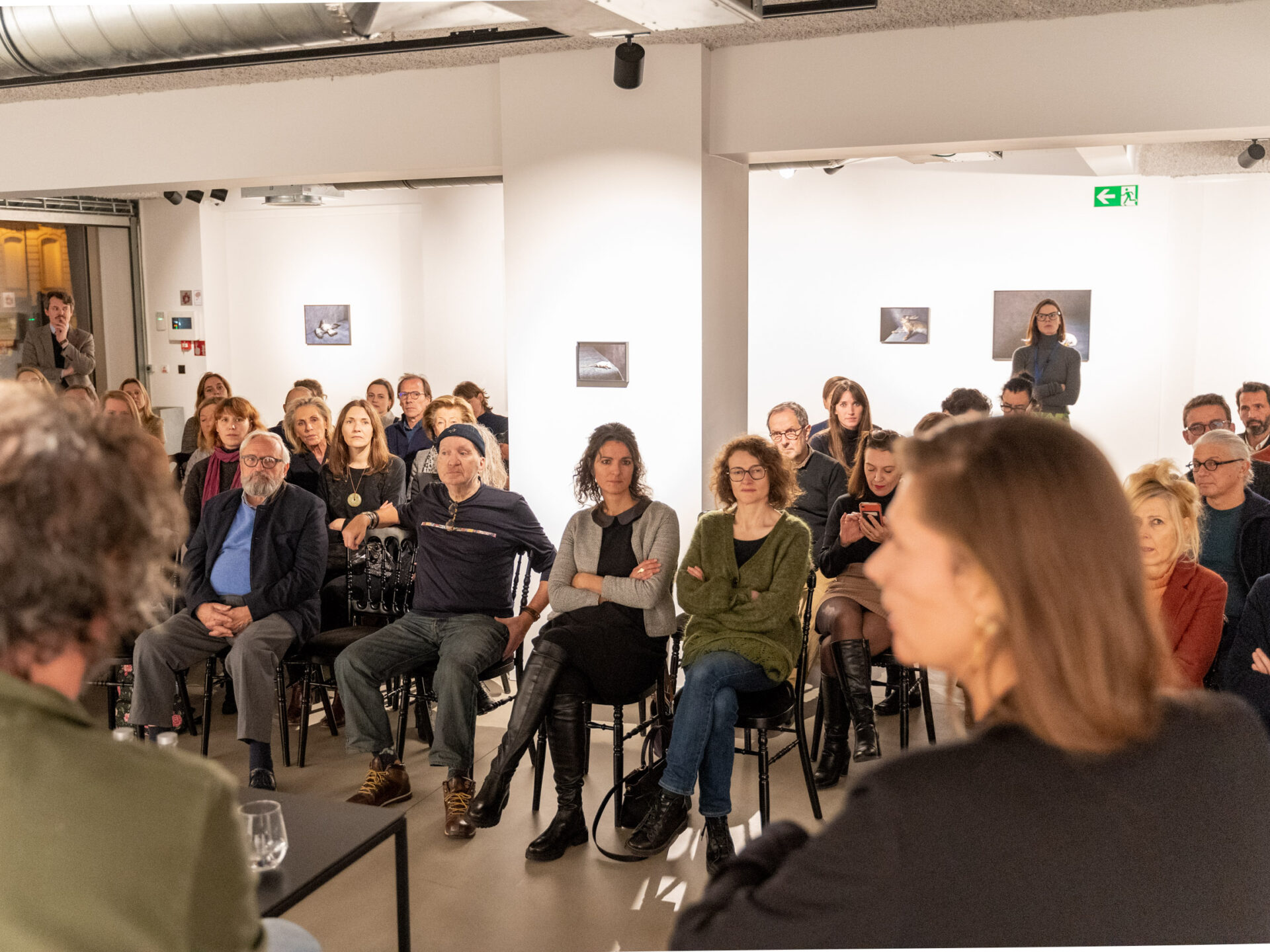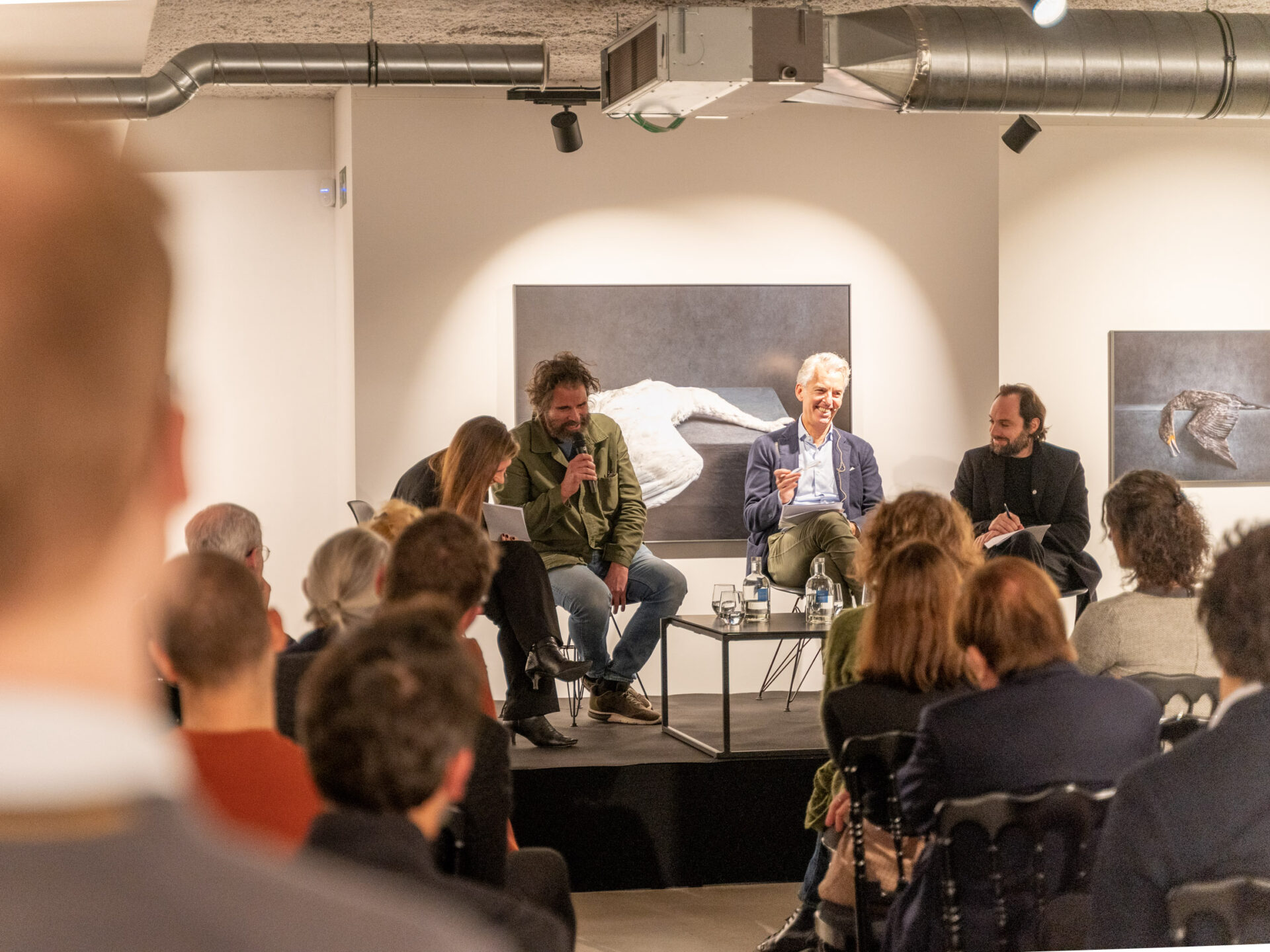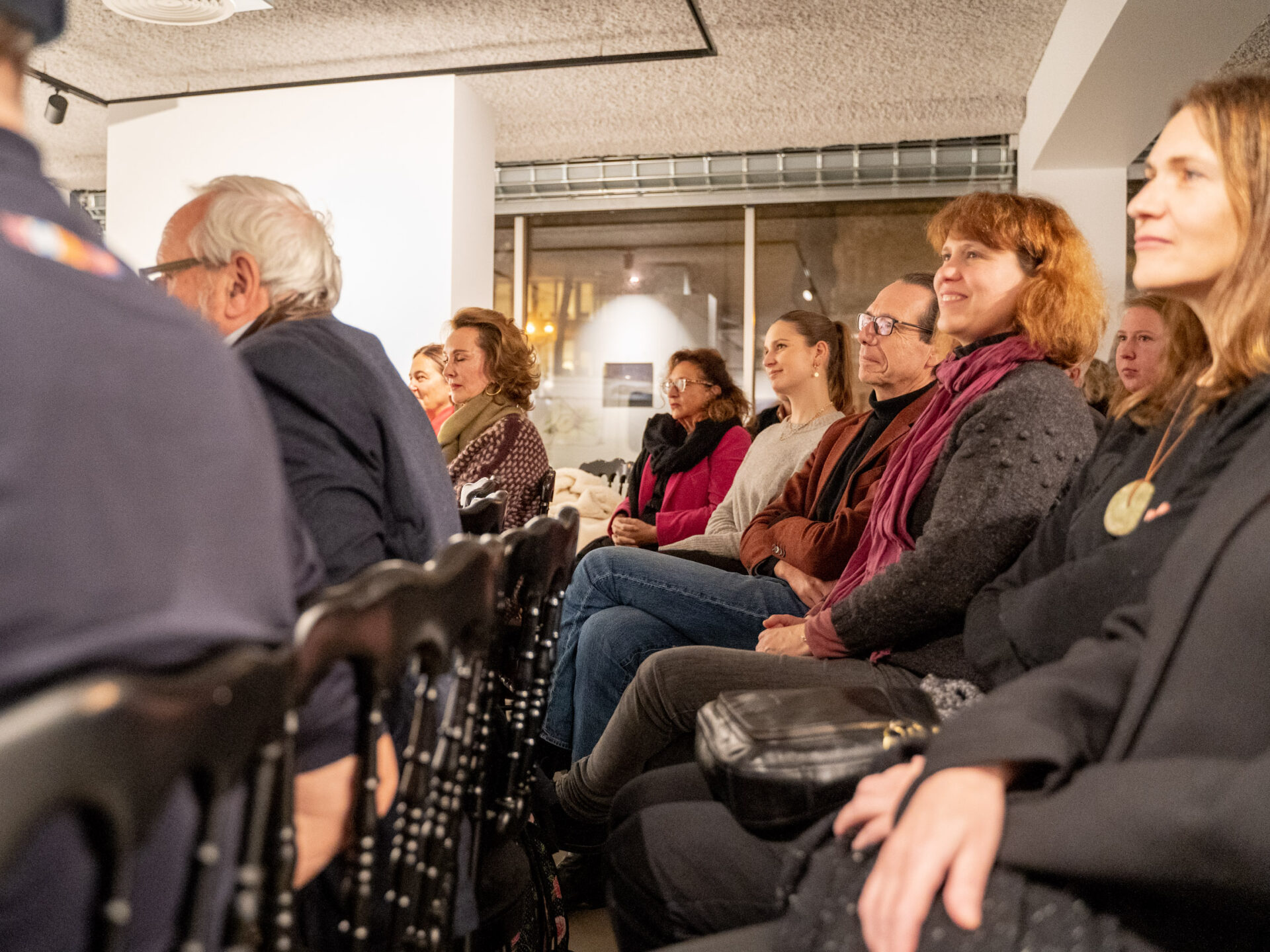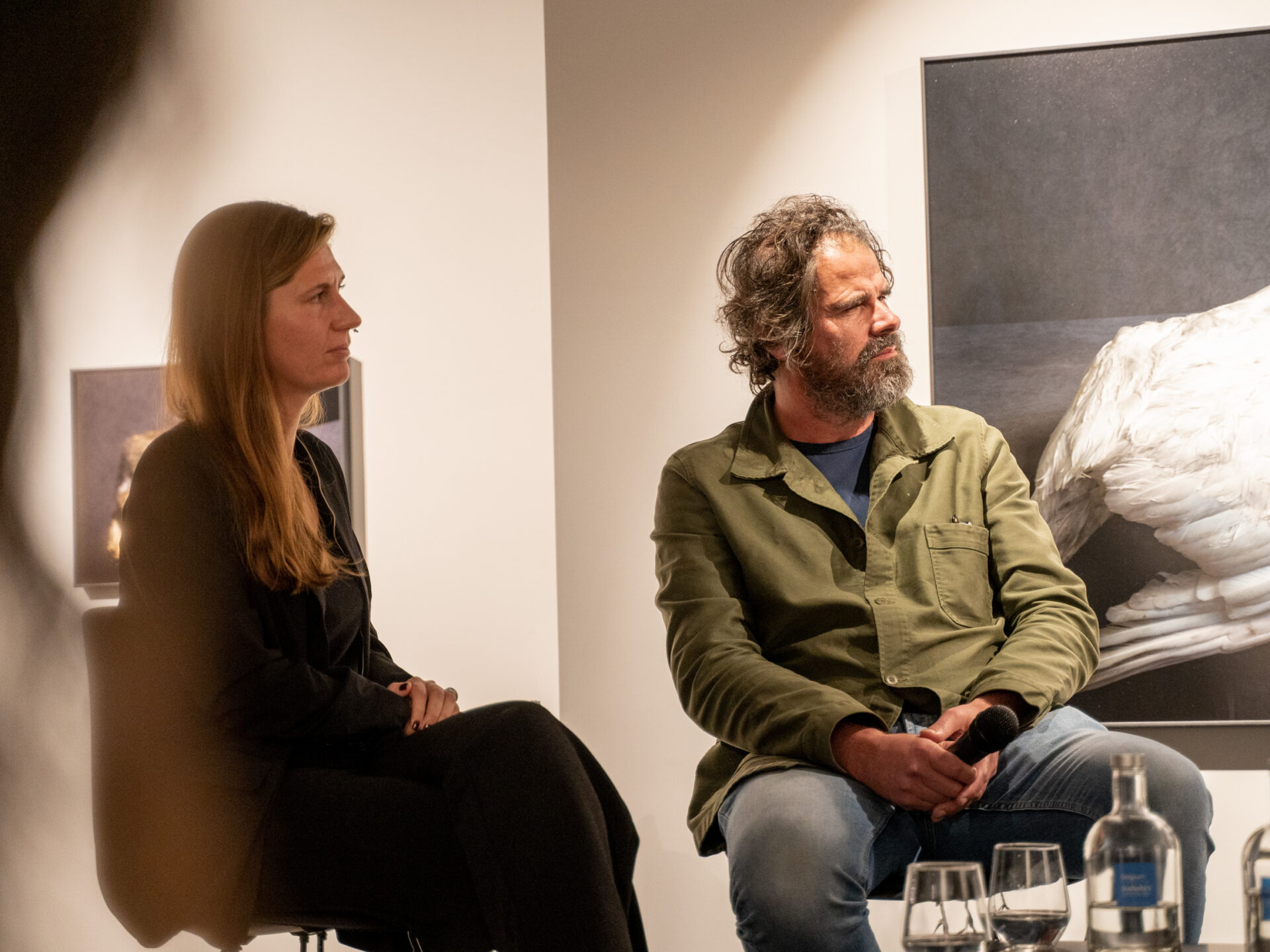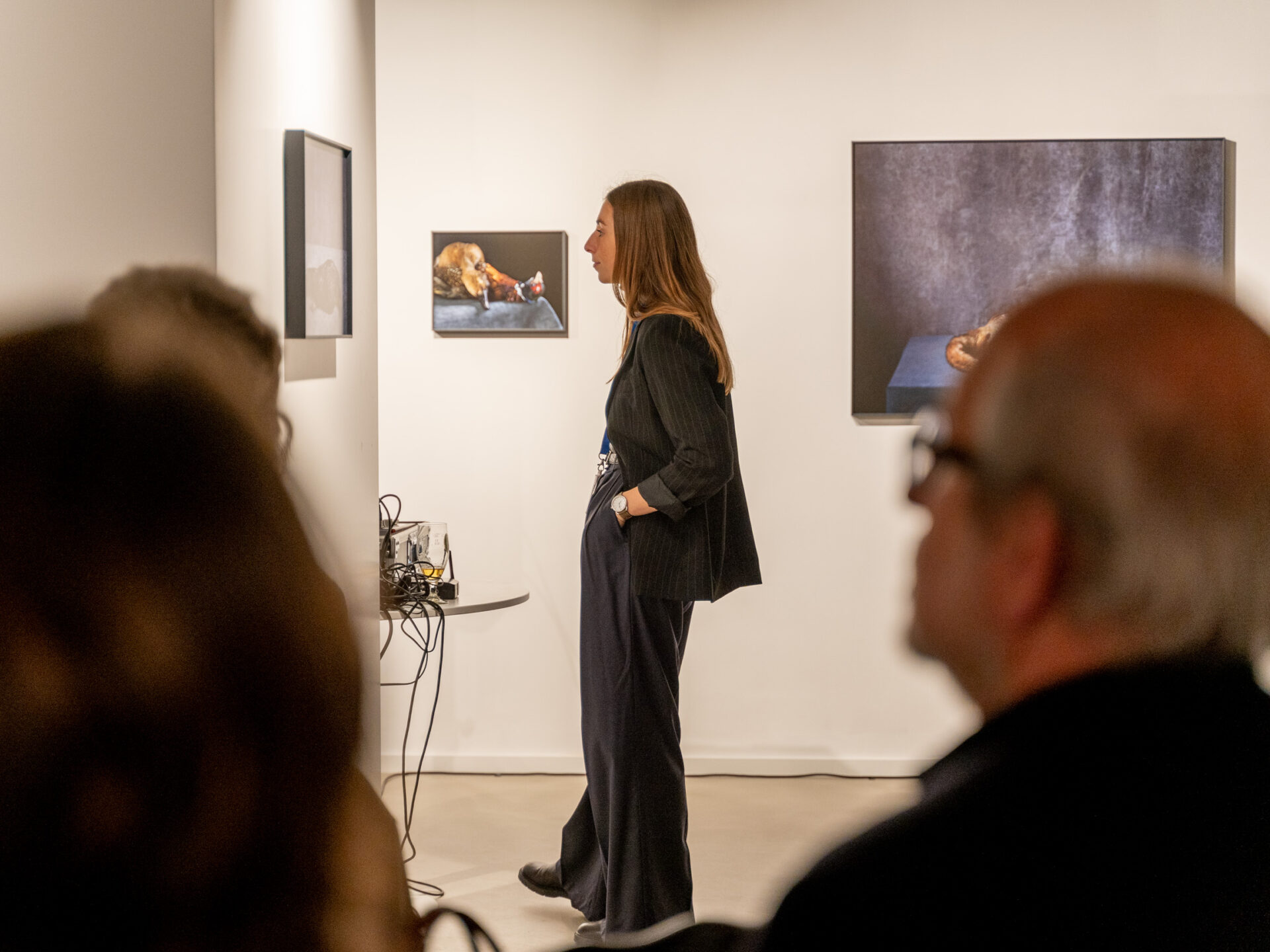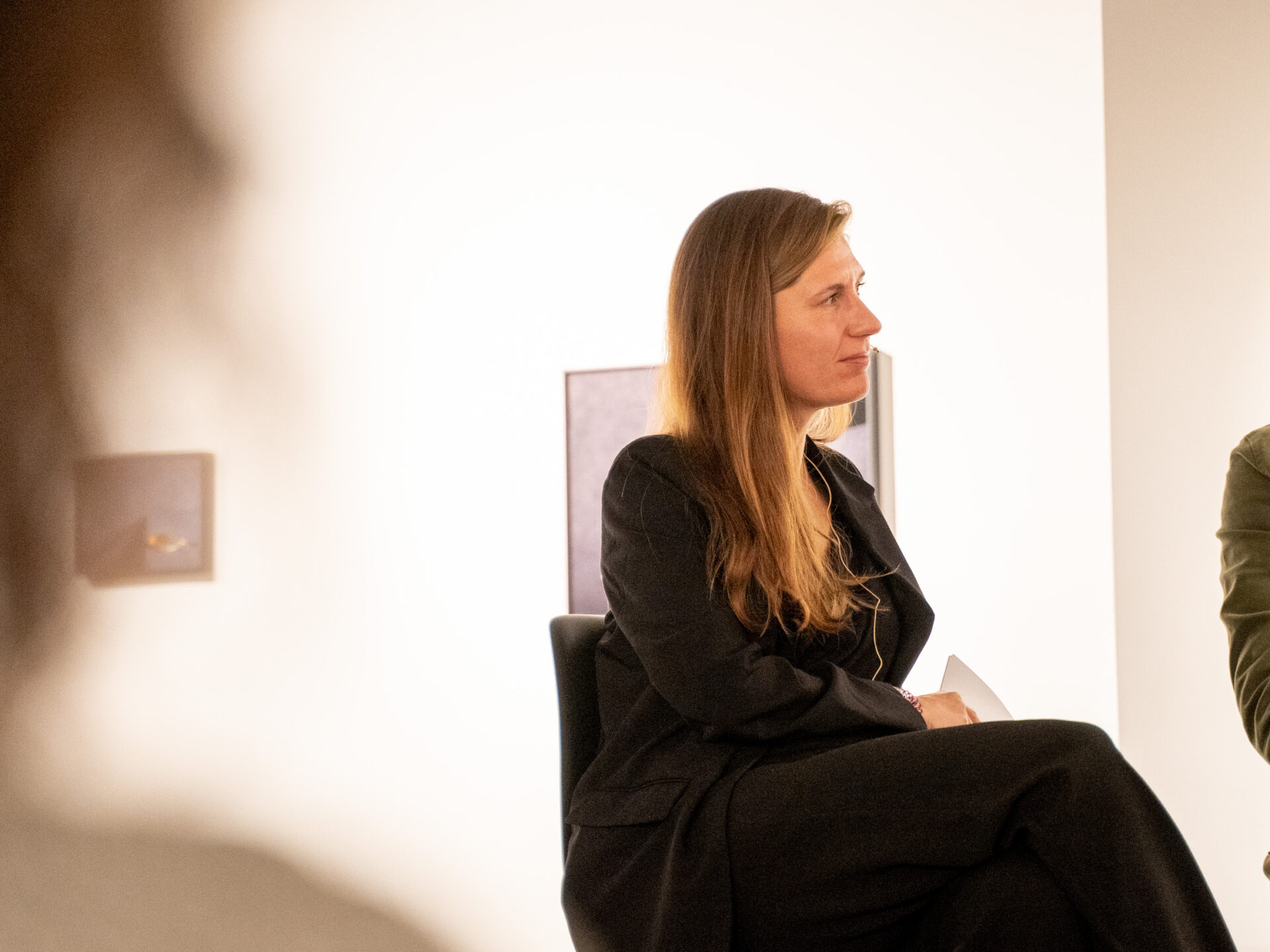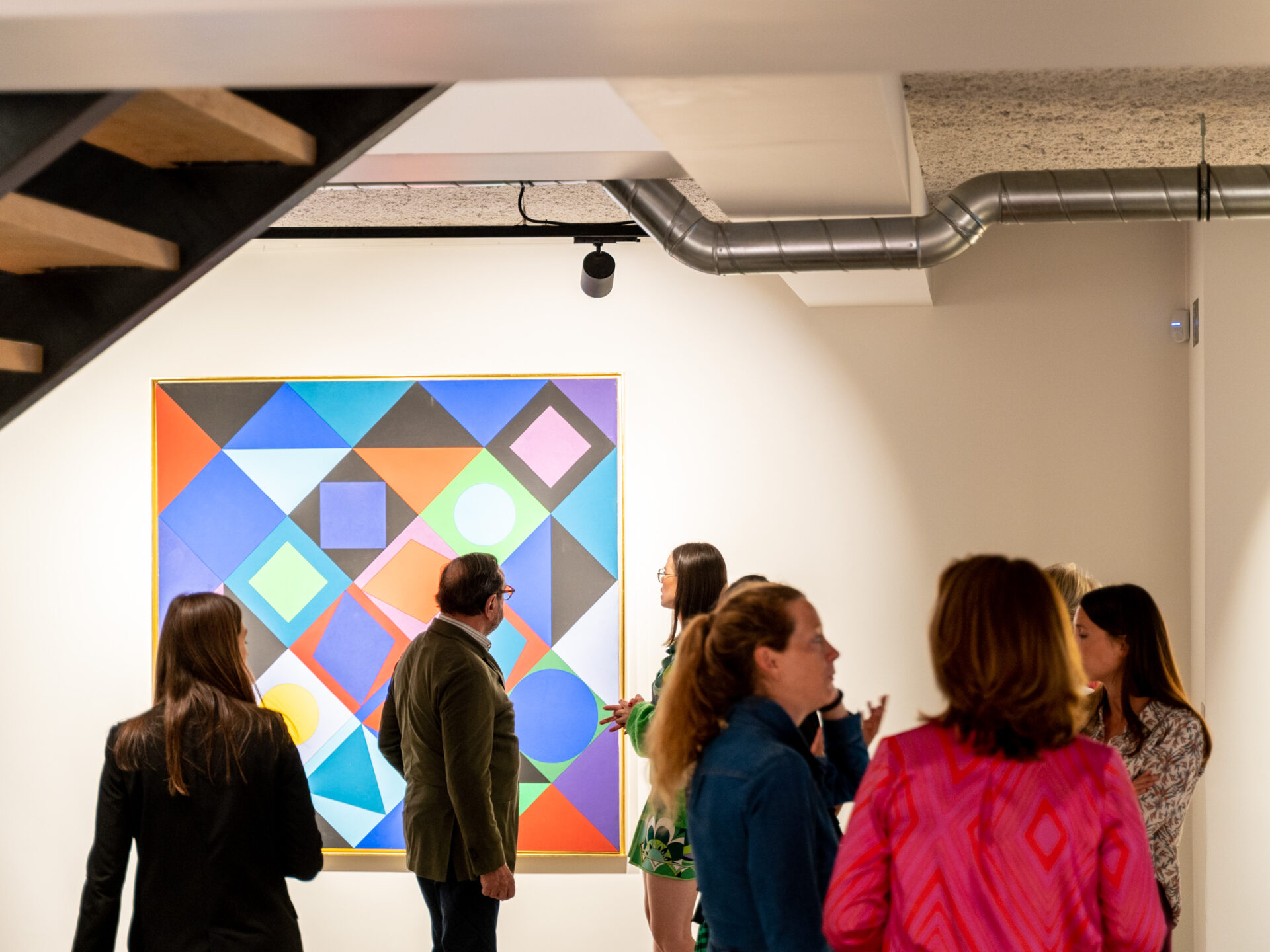On Tuesday 29 November, we were lucky enough to welcome the photographer Stephan Vanfleteren to our gallery for a debate on photography organised by our colleagues at Sotheby's Auction.
The round table was rounded off by Luc Estenne, an art and photography enthusiast and collector, and Roger Szmulewicz, director of Gallery FIFTY ONE in Antwerp and collaborator on the “Catching Time, freezing light”exhibition. The discussion was brilliantly moderated by Deborah Quackelbeen, Managing Director and Head of the Photography Department at Sotheby’s Belgium and Luxembourg.
For Luc Estenne, this series of still lifes by Stephan Vanfleteren must be thought as a living moment and not a fixed one. He imagines the animal before its rest, moving in its natural environment. It is important to imagine the before and after of the photo, because it is a freeze frame that should not remain frozen in the mind of its audience. Luc also told us about his personal art collection. He is passionate about photography and collects mainly artistic photos, which he constantly admires. His main collections consist of photos of objects and portraits, portraits that fascinate him, as well as humans in general.
We then discussed with our three speakers the future of photography and its market. All agreed that it was relatively uncertain. Indeed, photography has evolved a lot in the last few years, especially with the arrival of new technologies that have made it easier to take pictures and have democratised it.
However, they all agreed that artistic photography is not comparable to the day-to-day photos taken with a smartphone. Stephan insisted that everyone today knows how to take a beautiful photo, but that it is important to distinguish them from artistic photos whose aim goes beyond aesthetics.
Roger then spoke about his work as a gallery owner at Gallery FIFTY ONE. While some people say that the photography market has gone down a lot, he maintains that his market is a niche one. The selling price of the work of the photographers he represents is only increasing. One reason for this, he says, is the ease of selling online. His clients don’t have to go anywhere, he can easily email a file of the photo for them to preview. The photo market has become very global and so it is easier to sell than other galleries specialising in paintings or sculptures for example. He also has a large clientele who come to him with the intention of buying but without any knowledge or idea of what they are looking for. In these cases, he then starts a process of analysing the client to find out their tastes, their desires, their preferred tones, in order to find the right picture and it is, he says, very satisfying when he finds the right picture for the right client.
However, not everything is so simple in the photo market according to our three speakers. The main problem is printing. A photo can be printed as many times as desired and therefore does not make it unique. This is why the principle of limited edition prints was introduced, to offer the customer a piece with a copyright and therefore a higher value. The problem is that this system of editions is not used by all photographers and is not standardised. Some will not disclose the number of editions and others will not number them. At the moment, everyone manages their editions as they wish and there is no universal and uniform system in place to authenticate artistic photos.
Finally, we discussed more technical aspects of photography with our speakers. One of them was related to the development and use of the darkroom. Stephan shared with us that he had no particular attraction to this stage of the process, although it was important for a photographer to get involved and to develop the images himself. Luc spoke about the conservation of art photographs as a collector. Photographs are works of art that cannot be preserved for a long time like a canvas by a great painter. In order to preserve the colour and the paper, museums have to put them in dark rooms at room temperature so that they do not deteriorate. If a photo is damaged or has taken a beating, it can also be restored.

